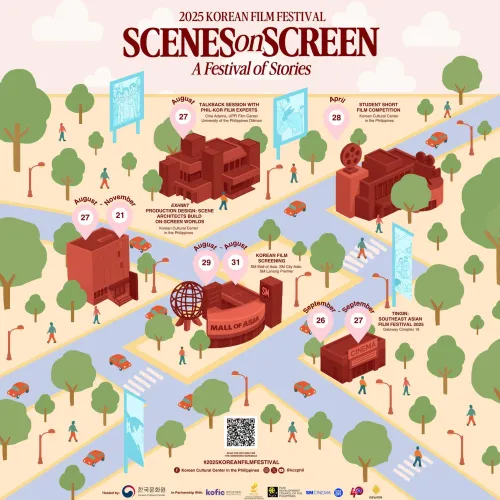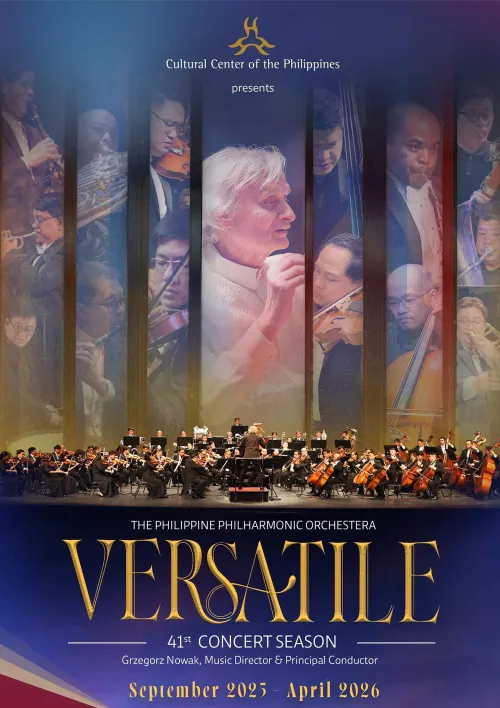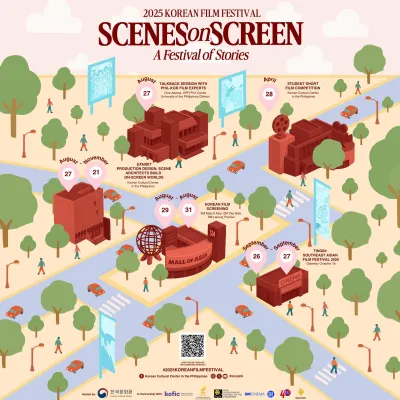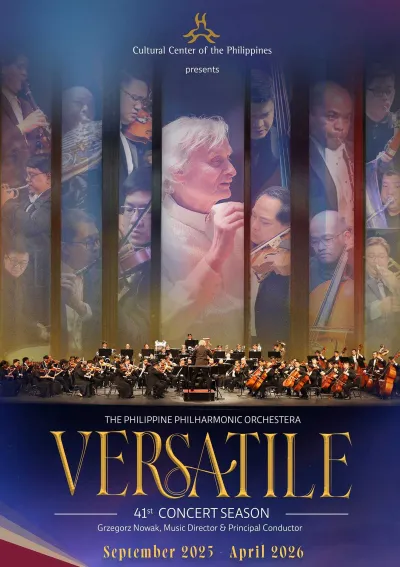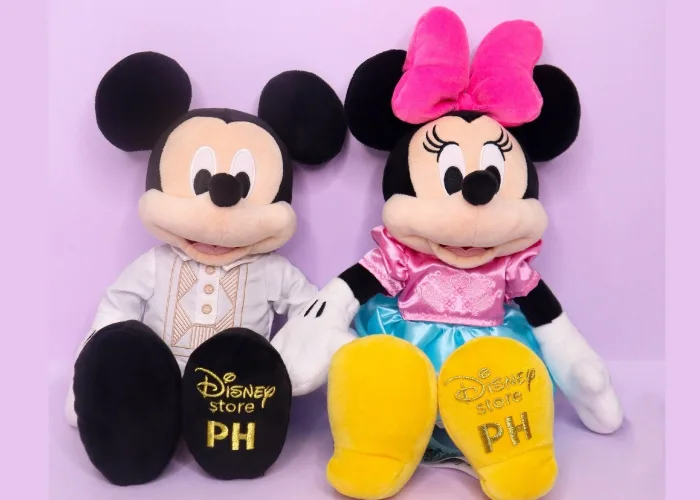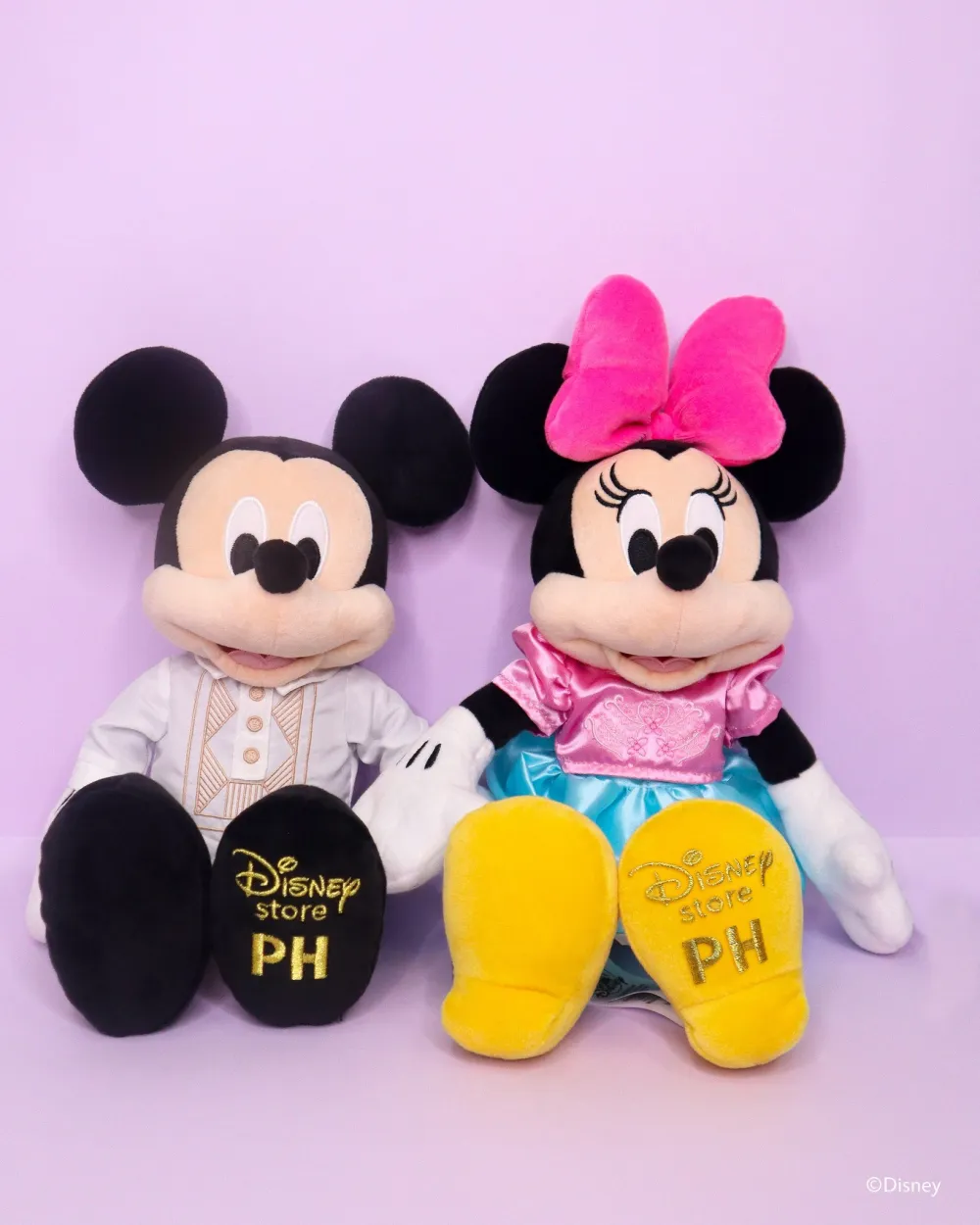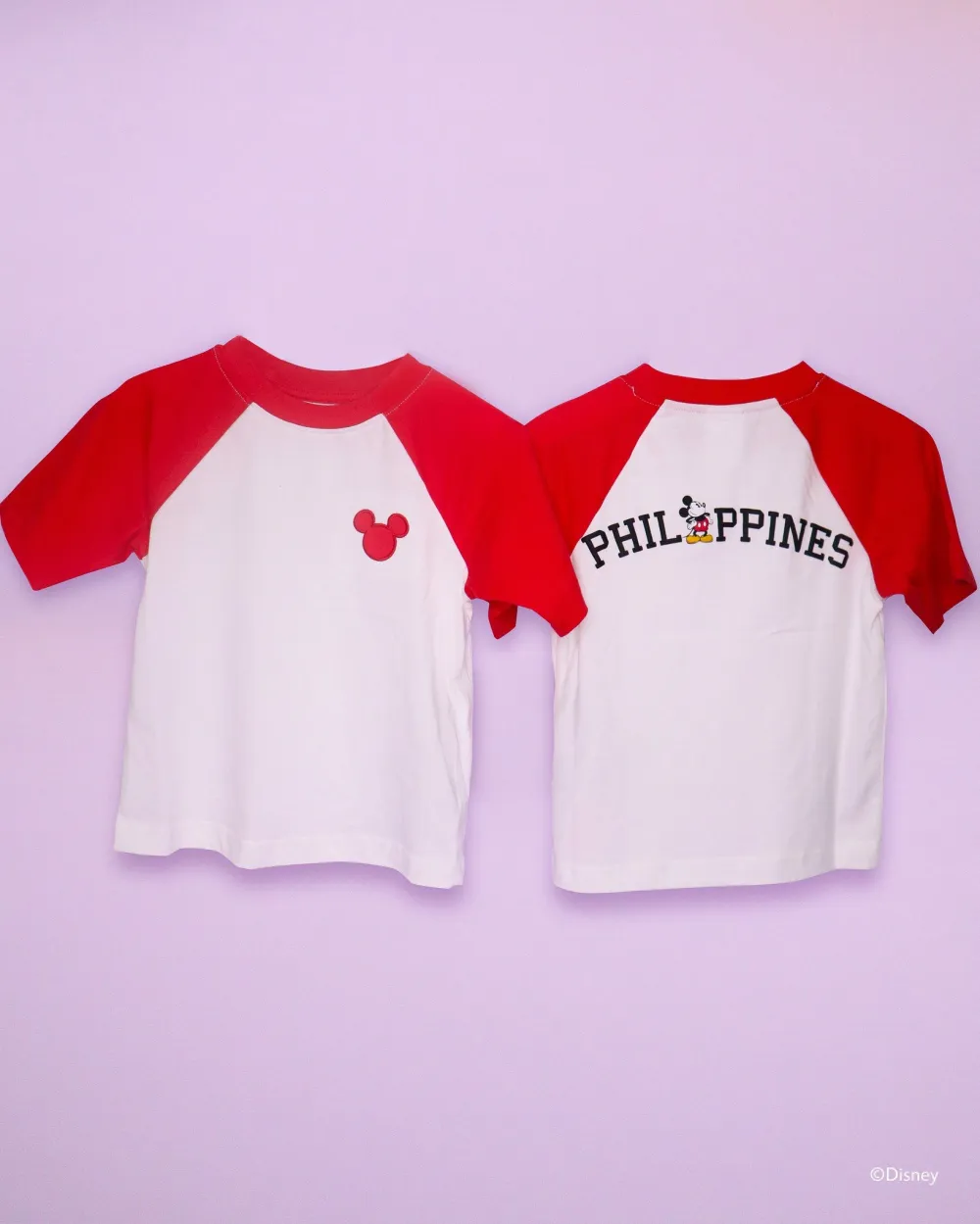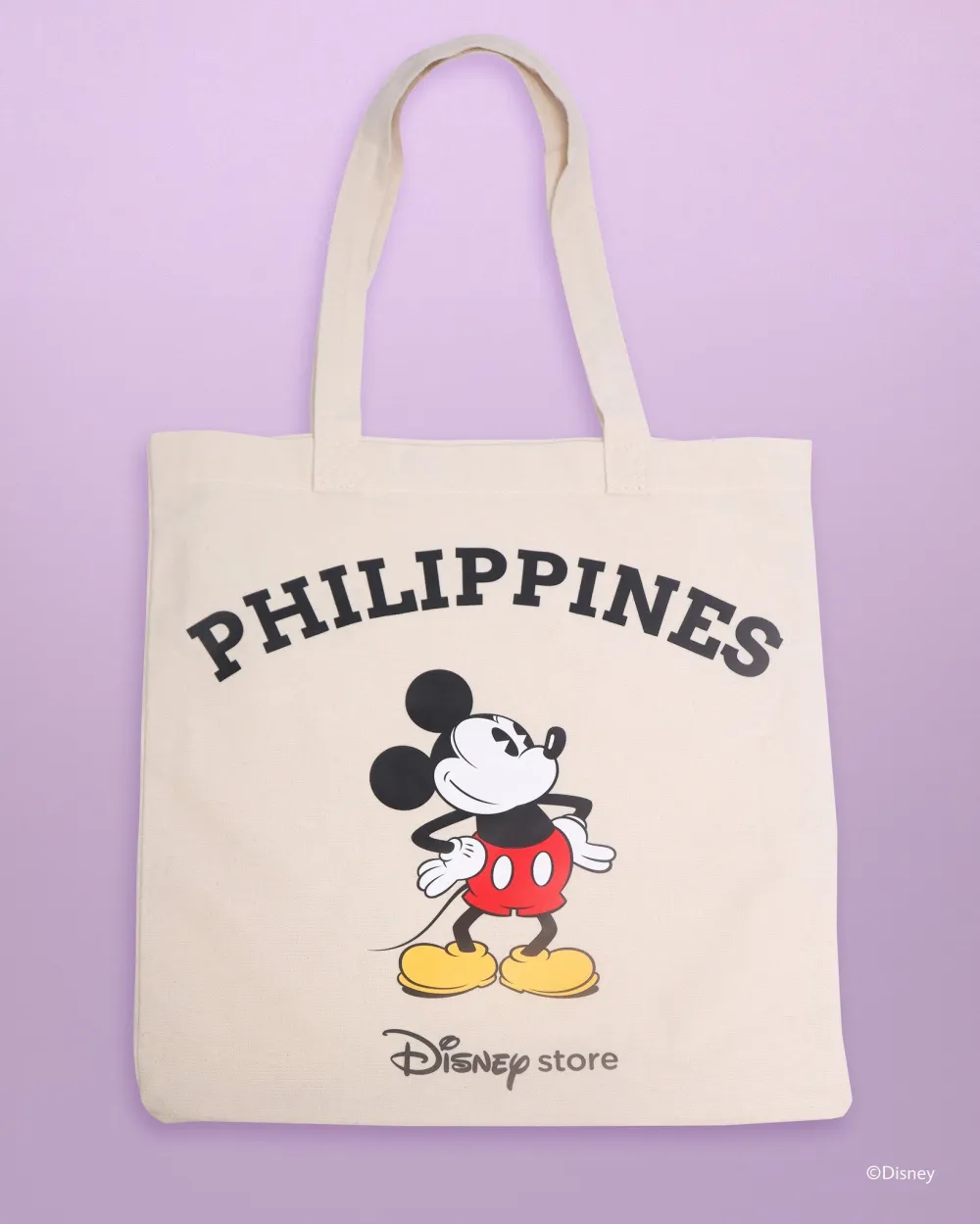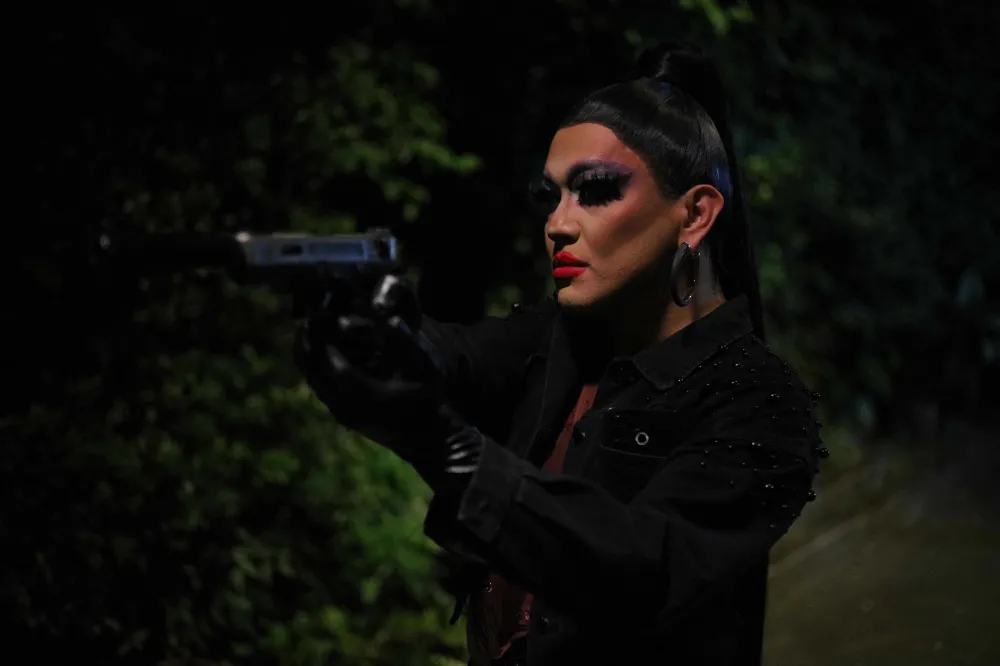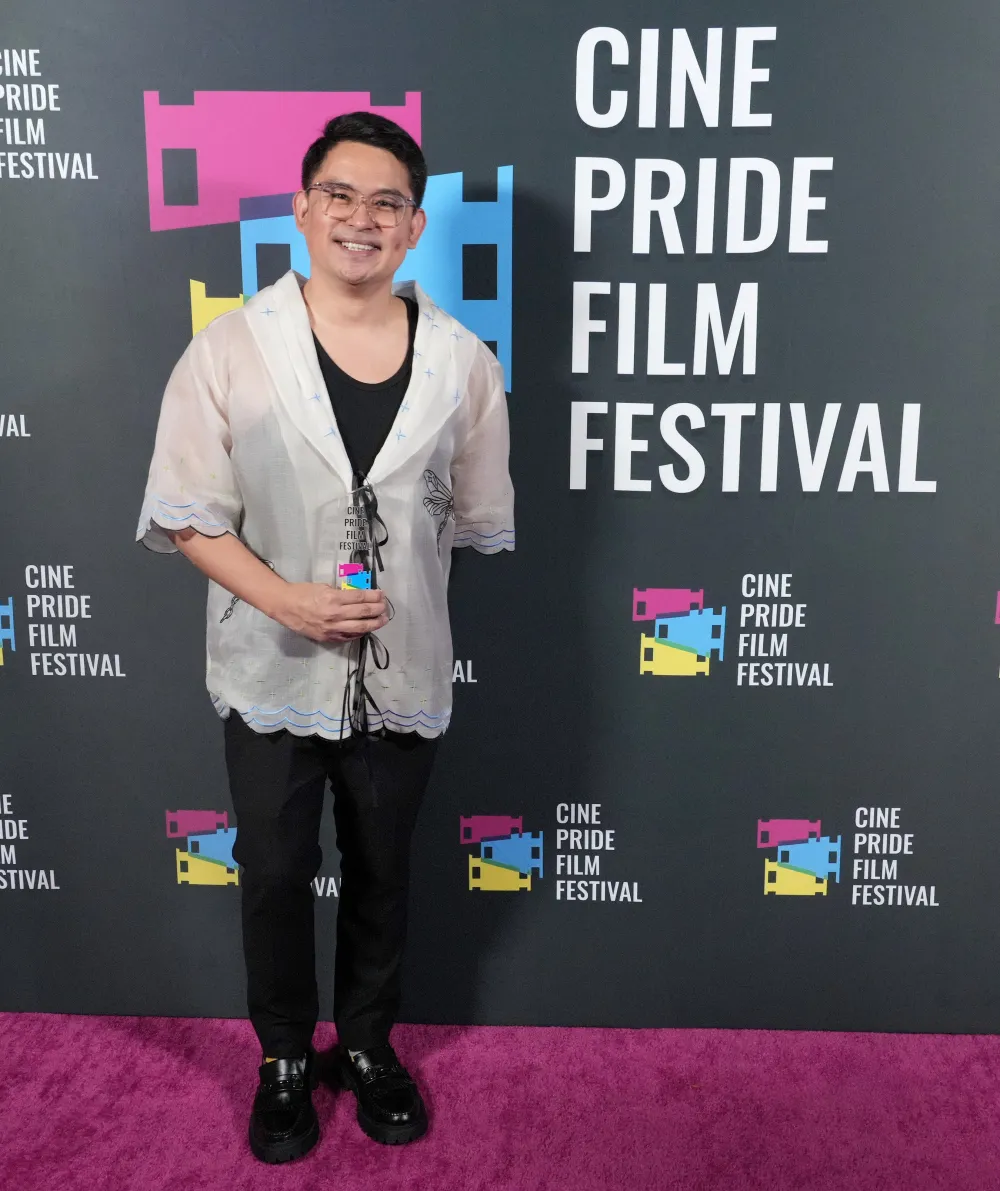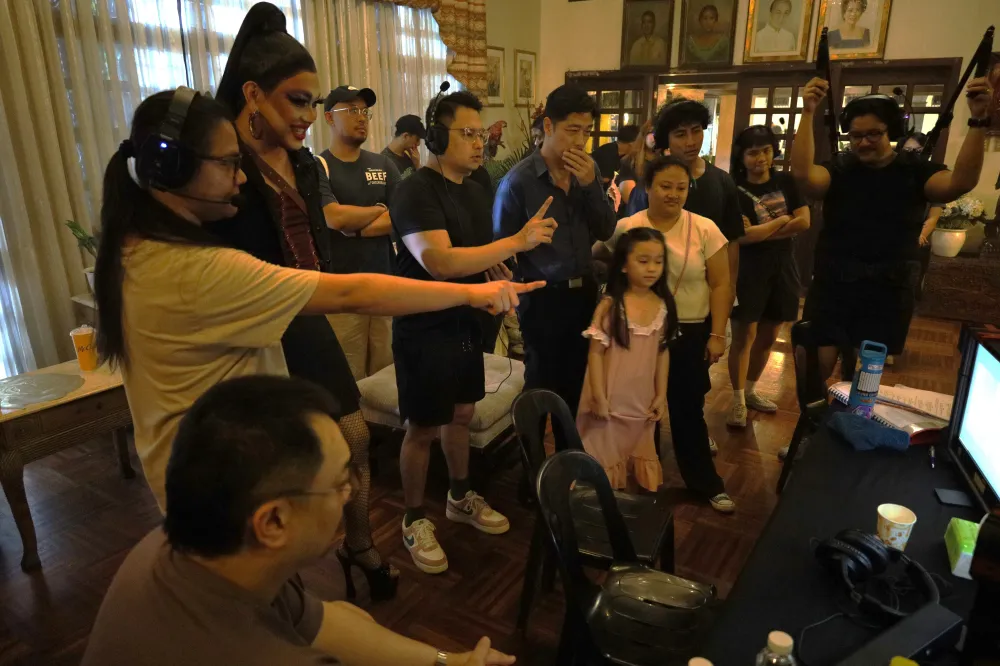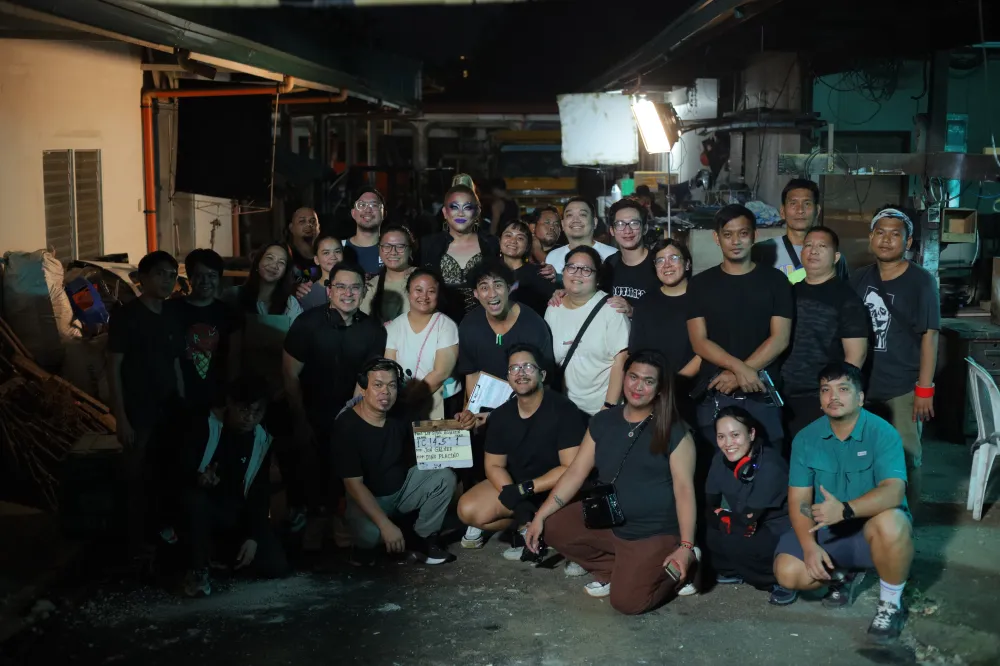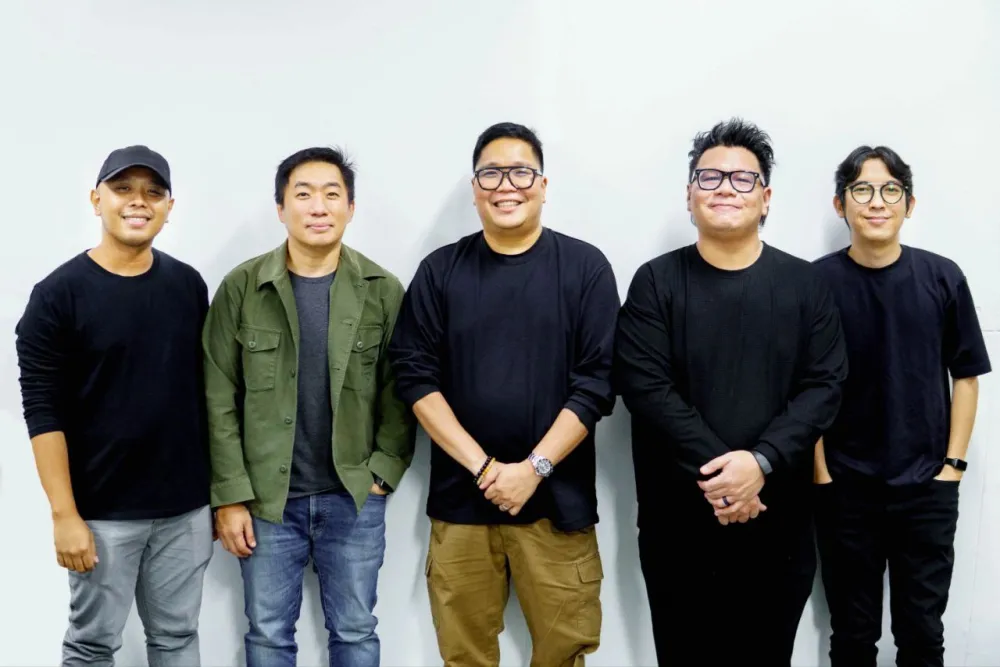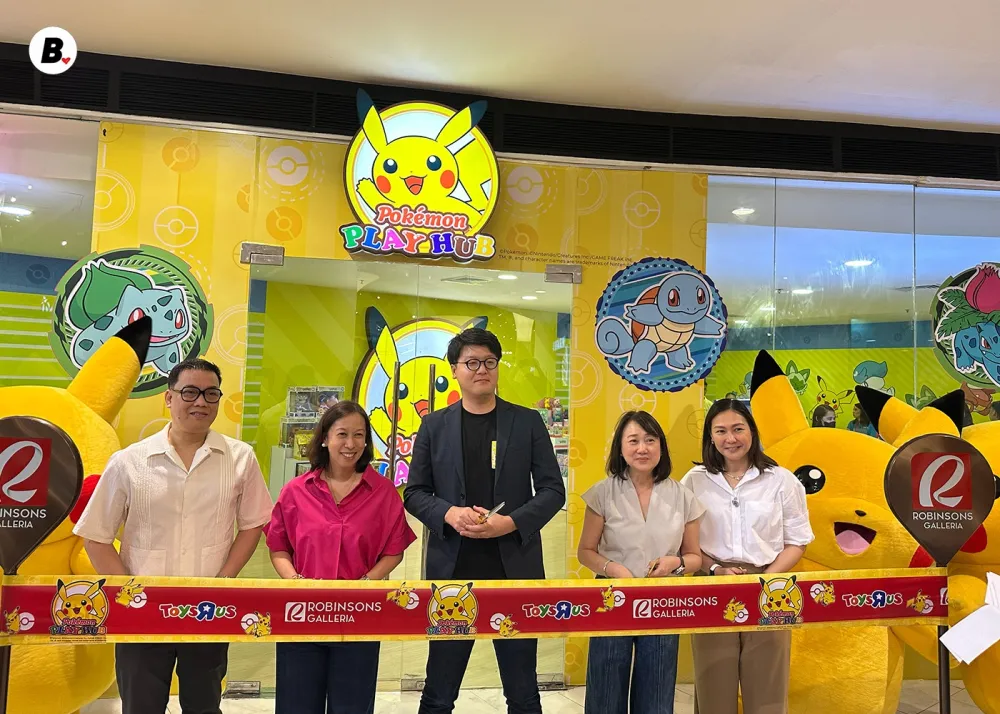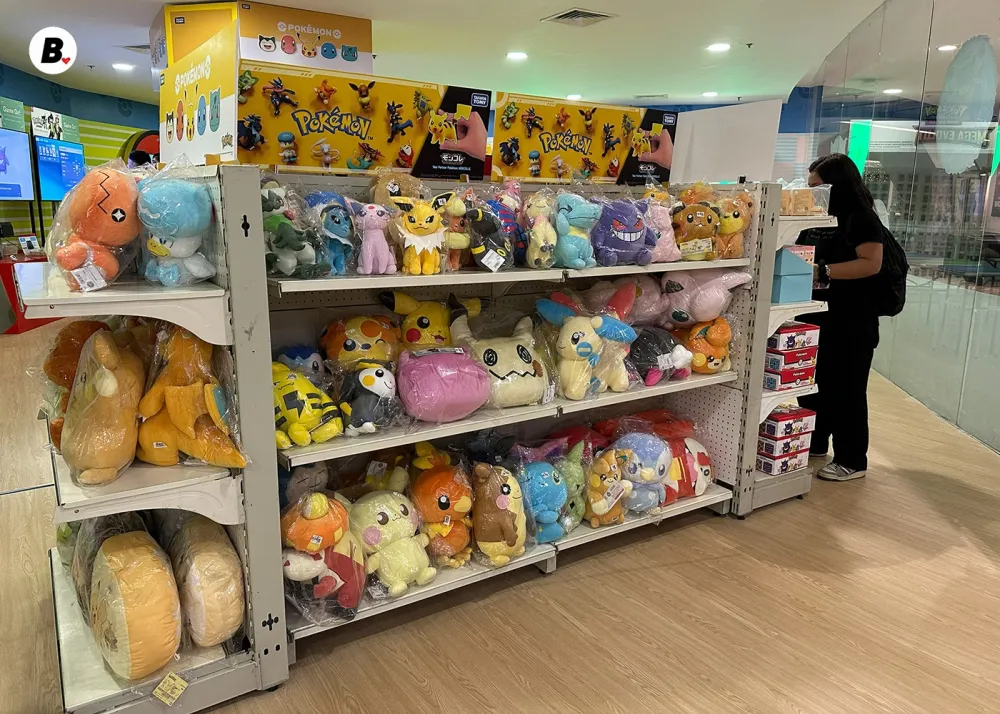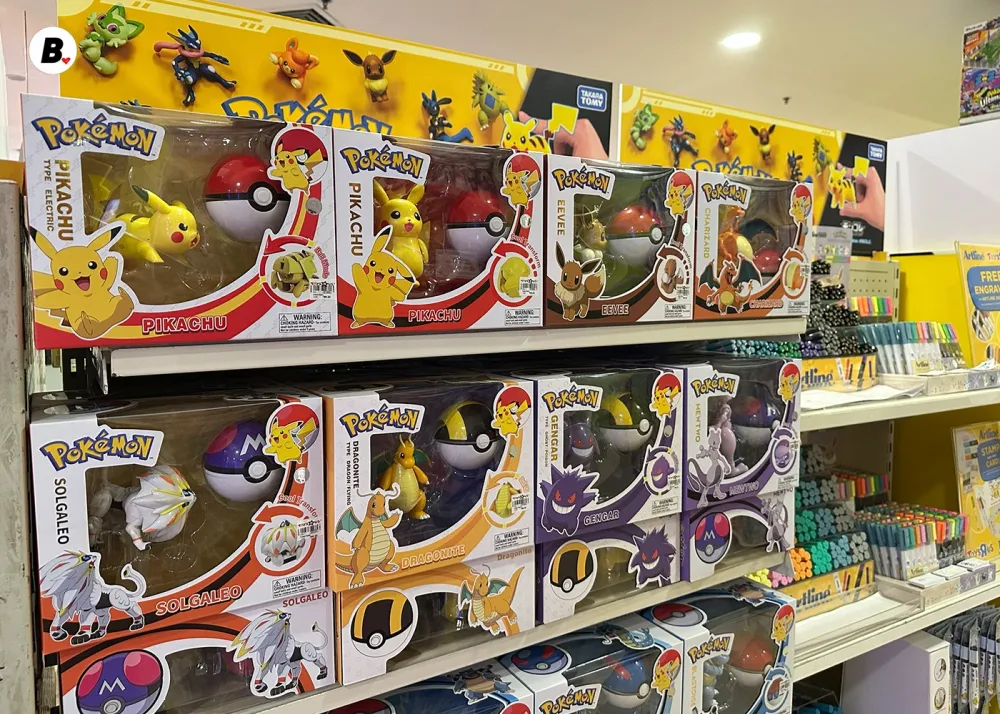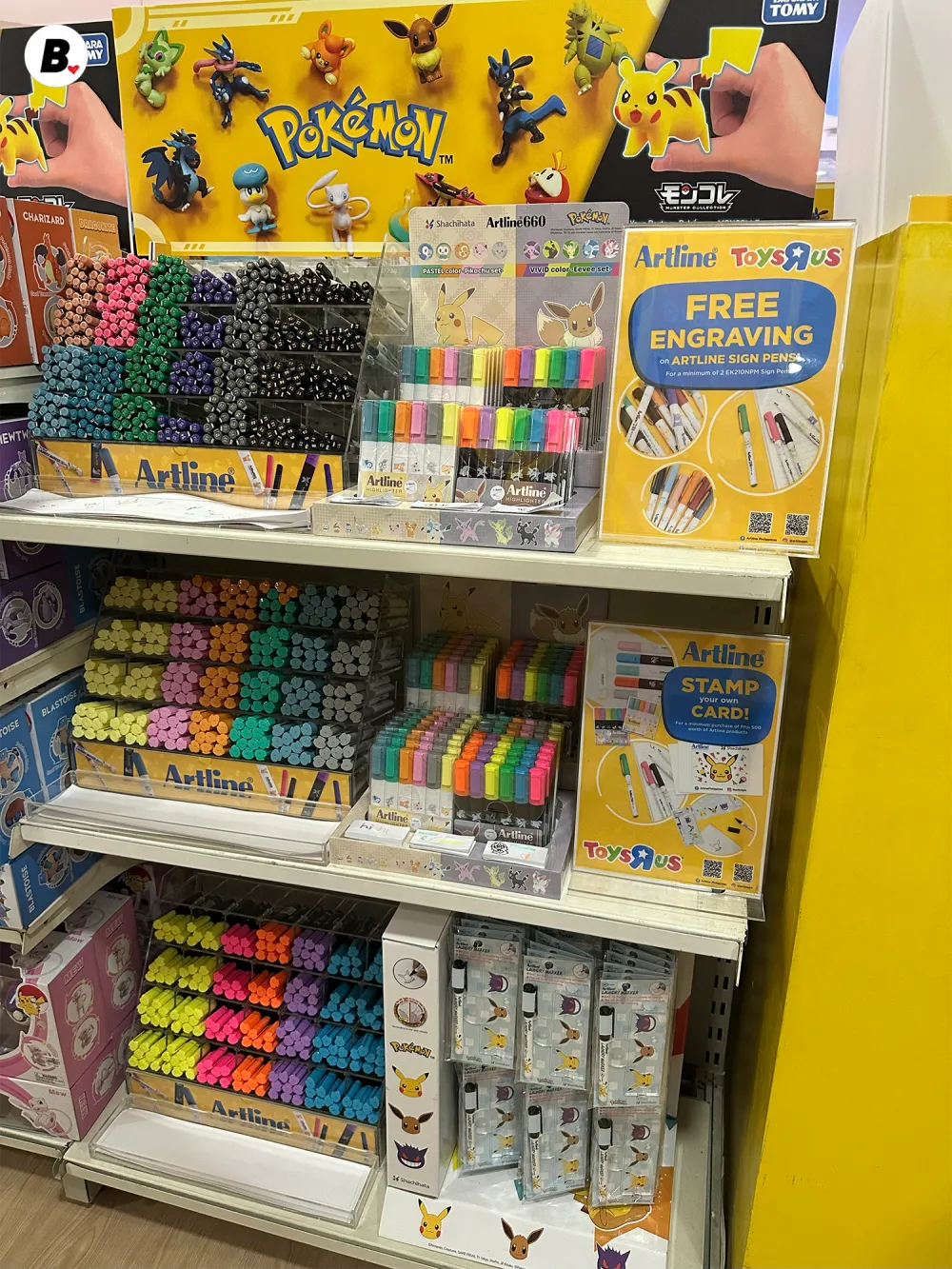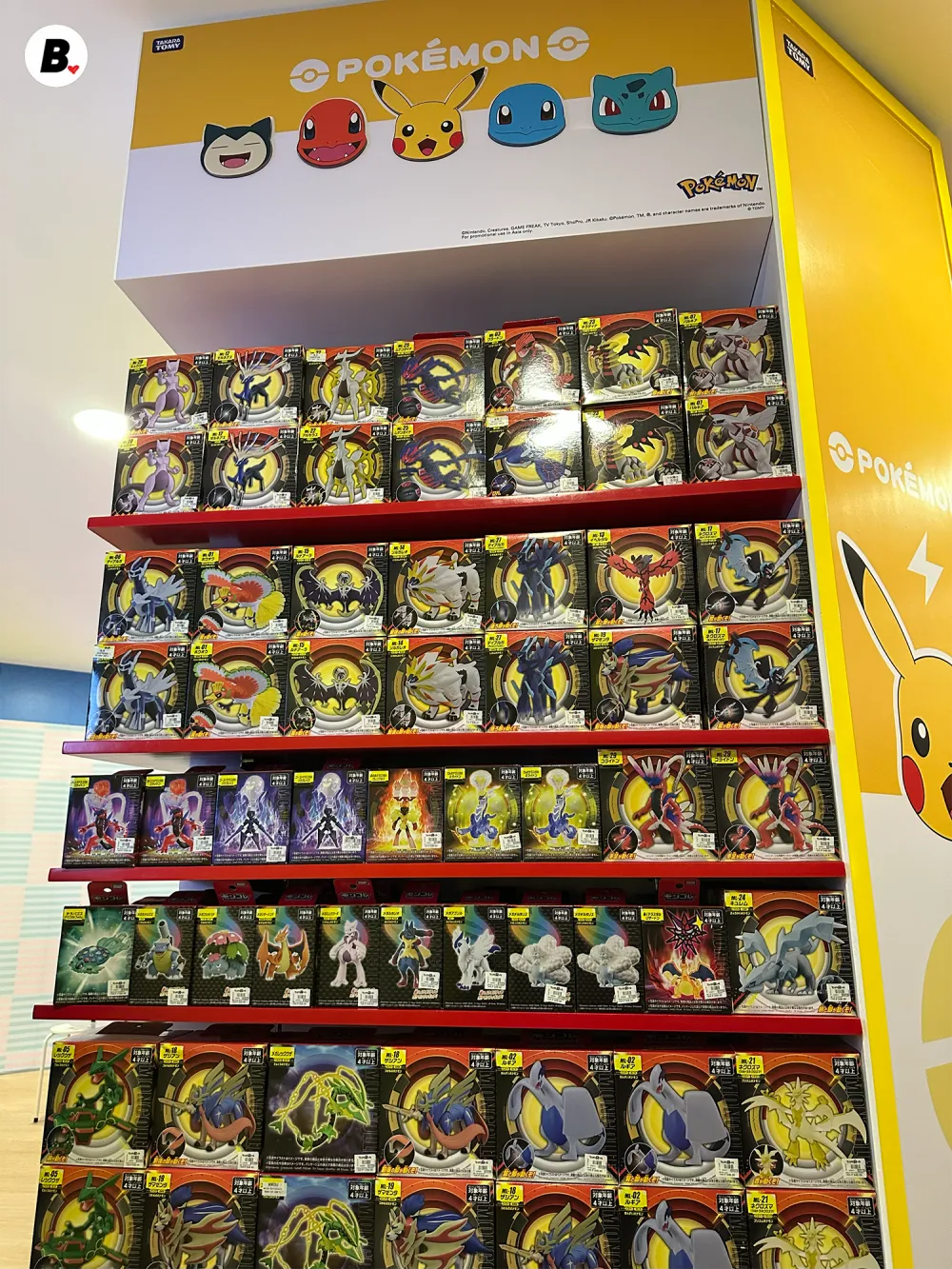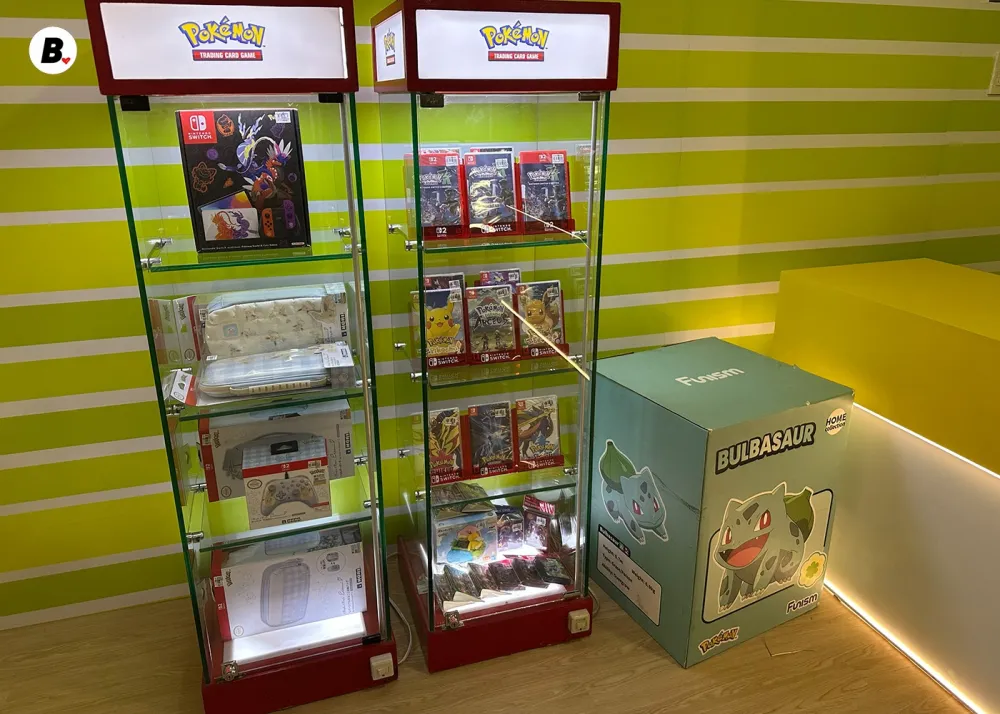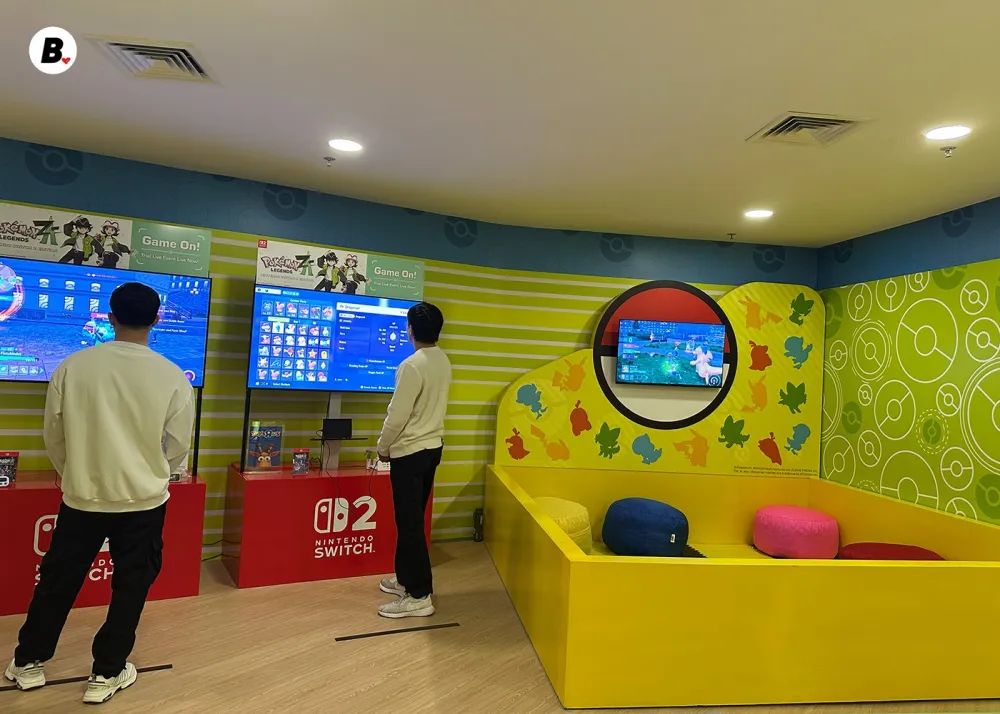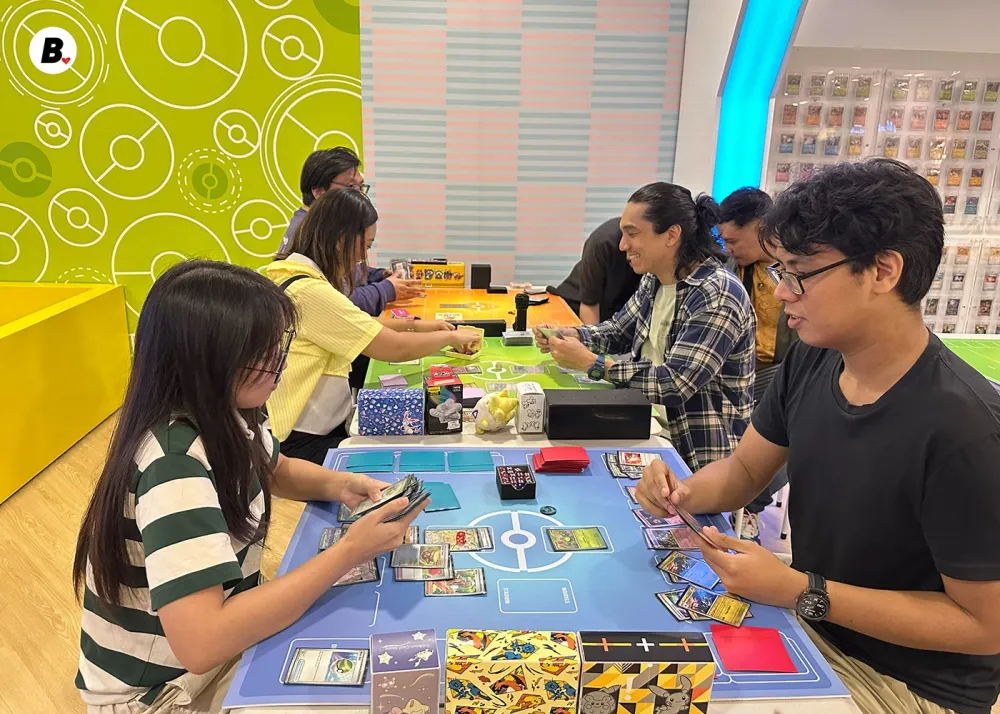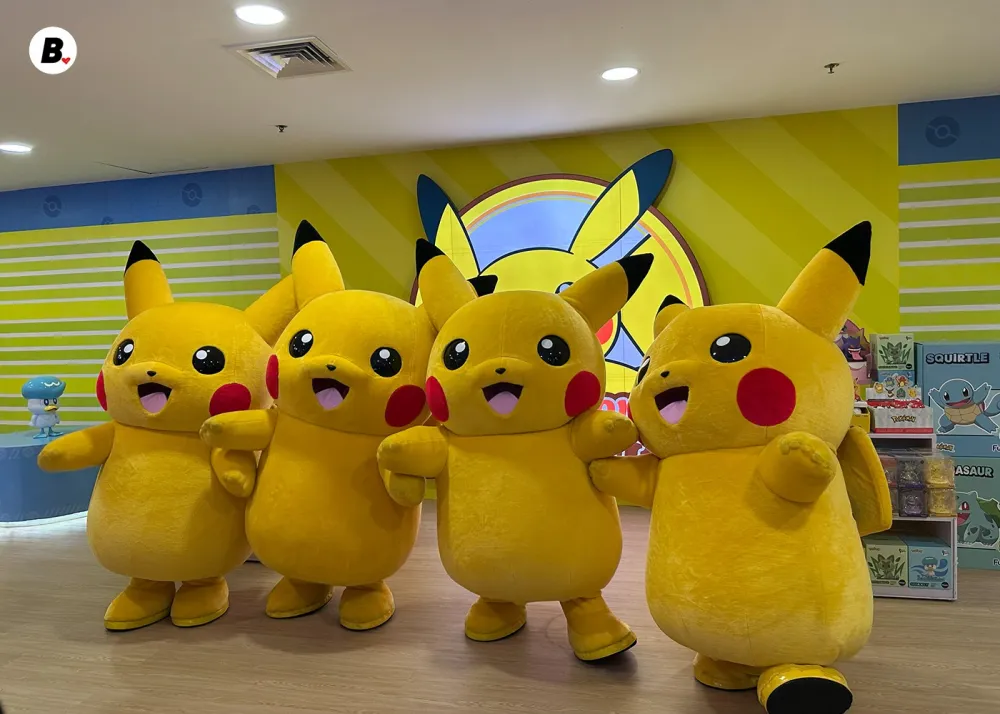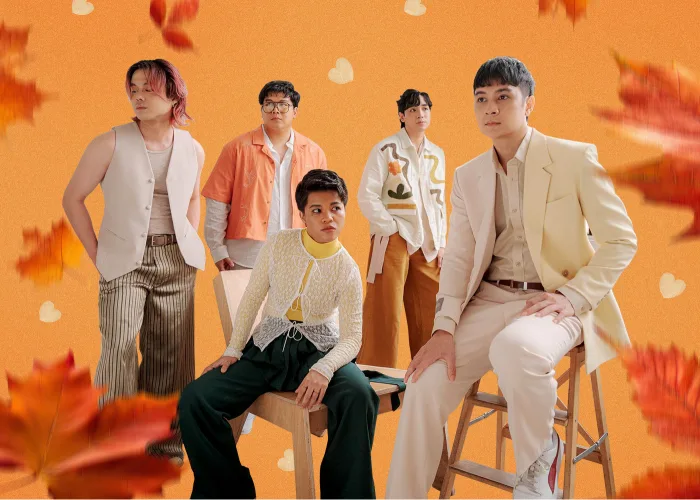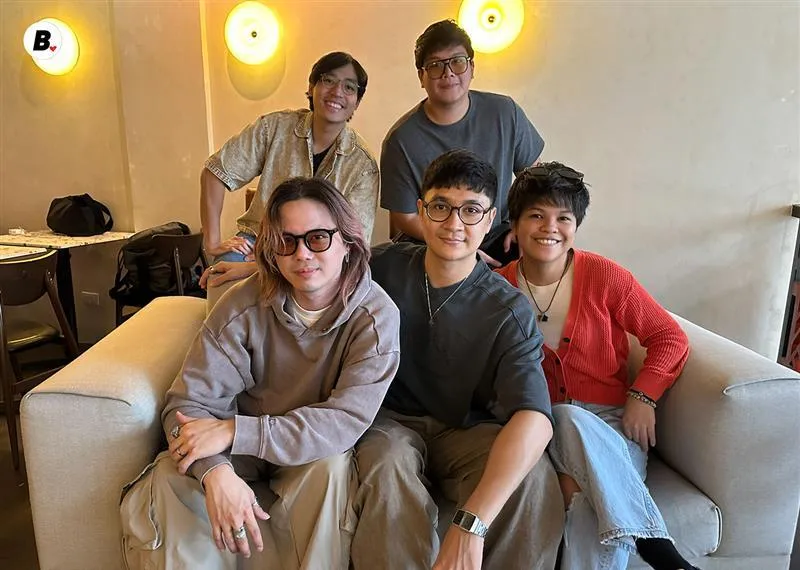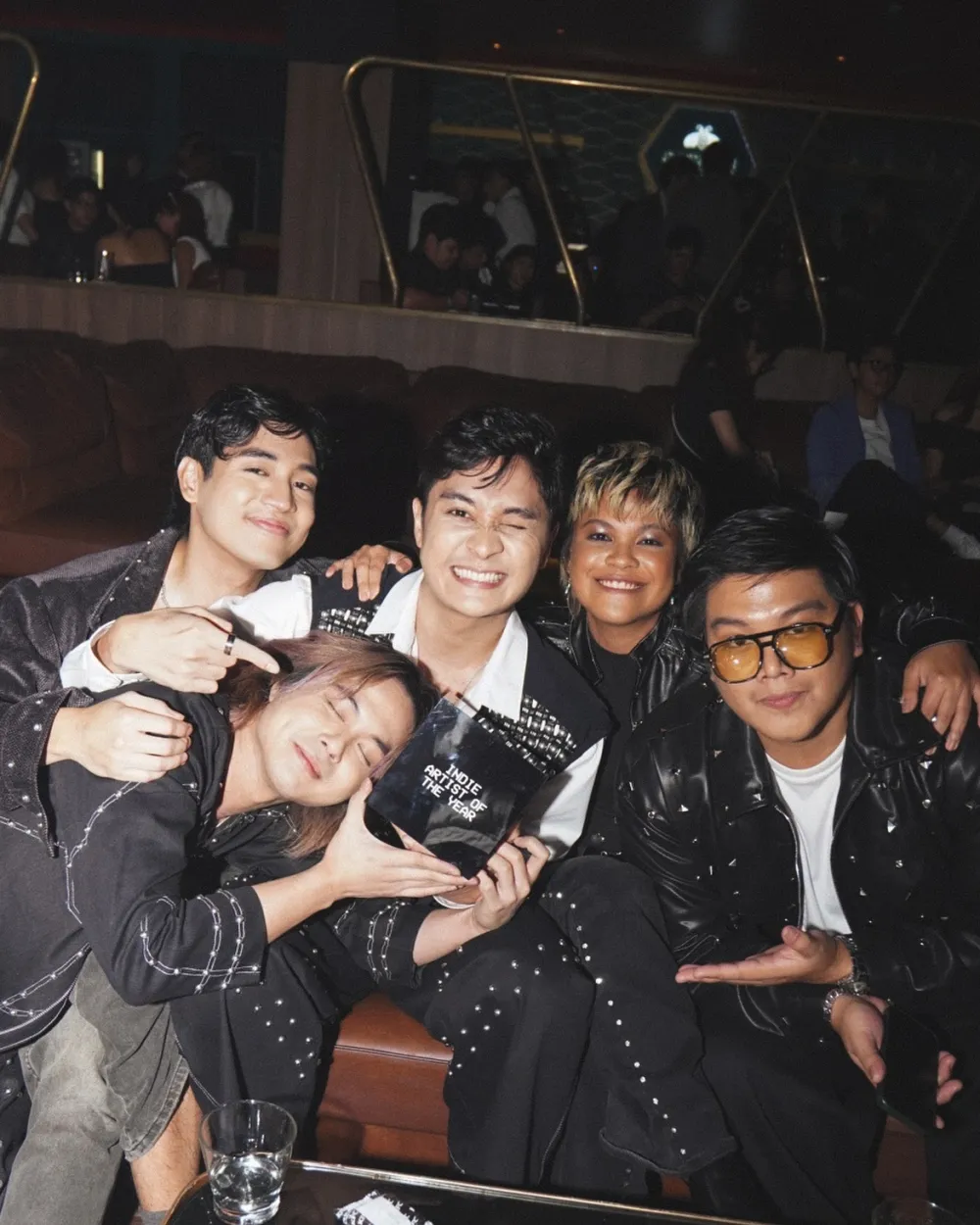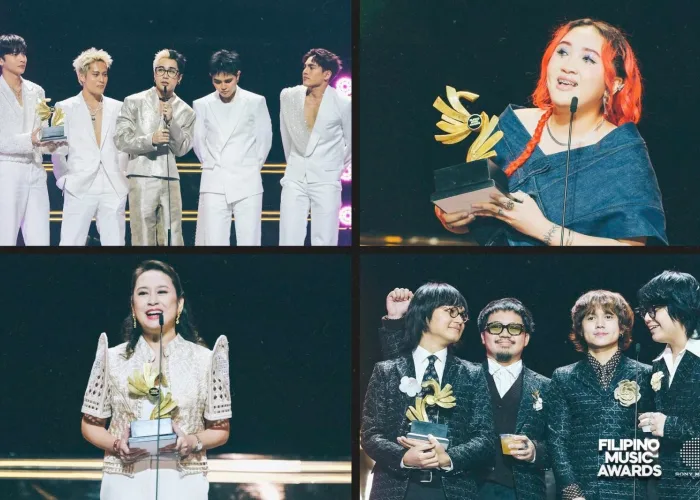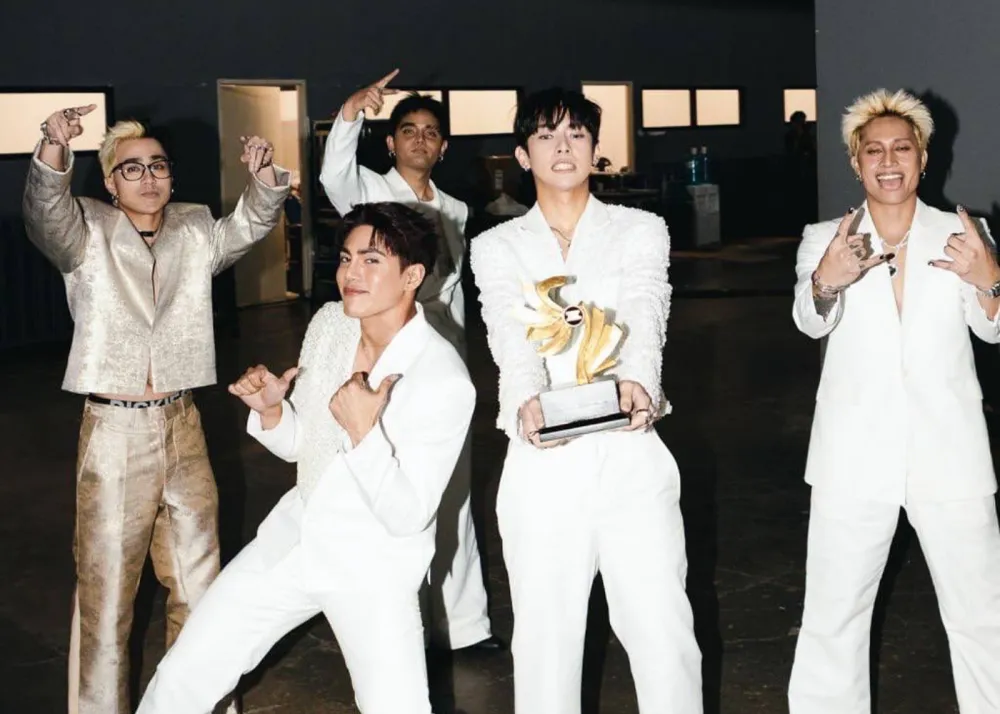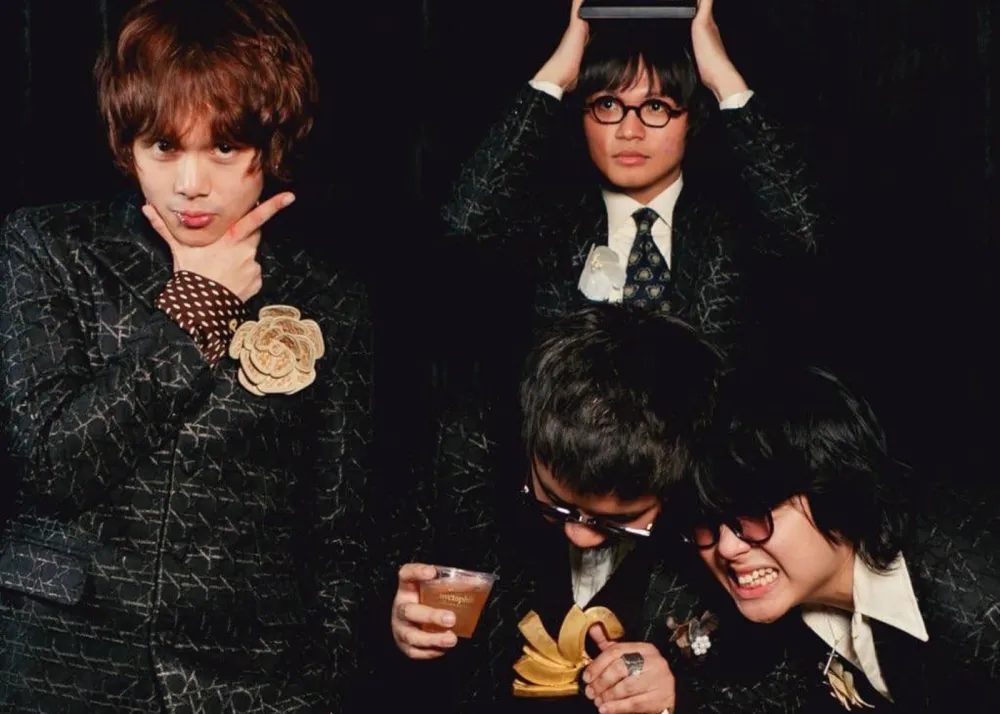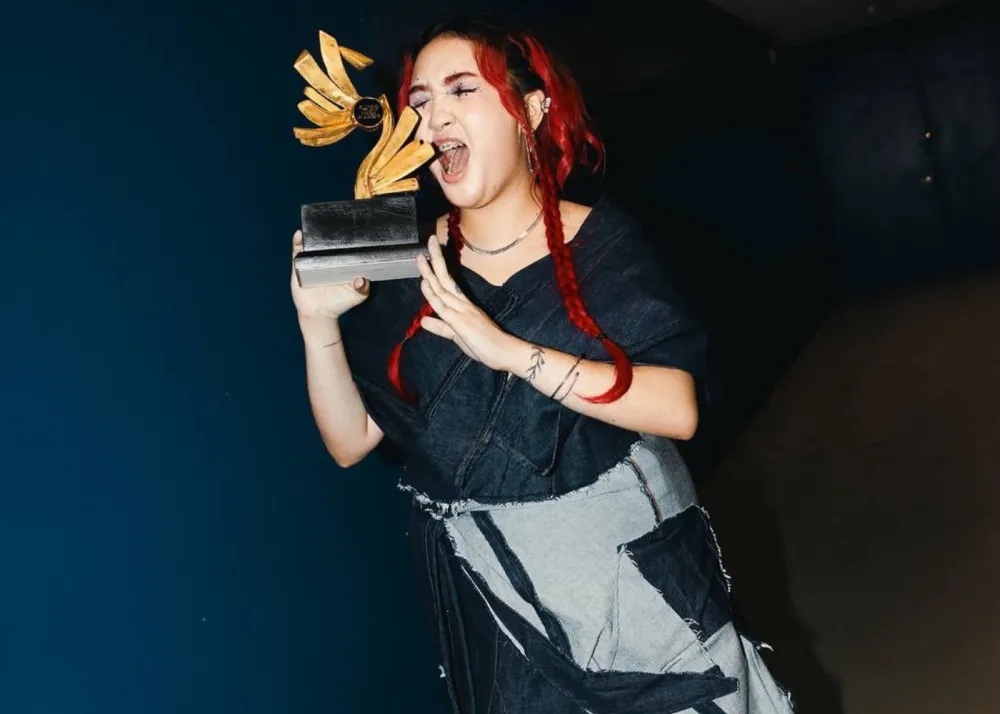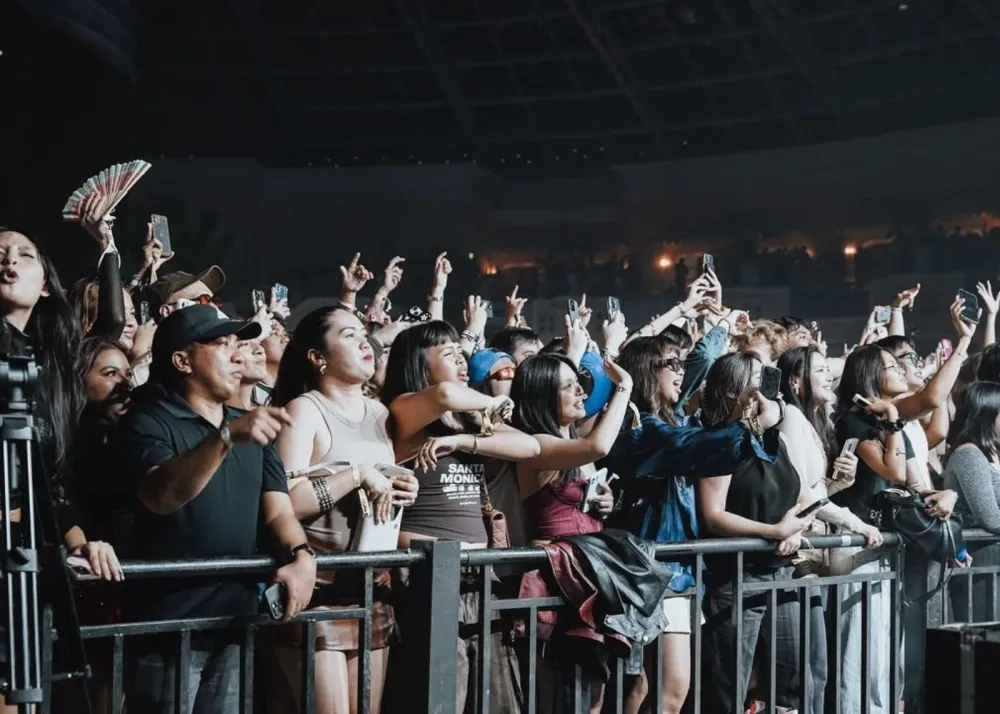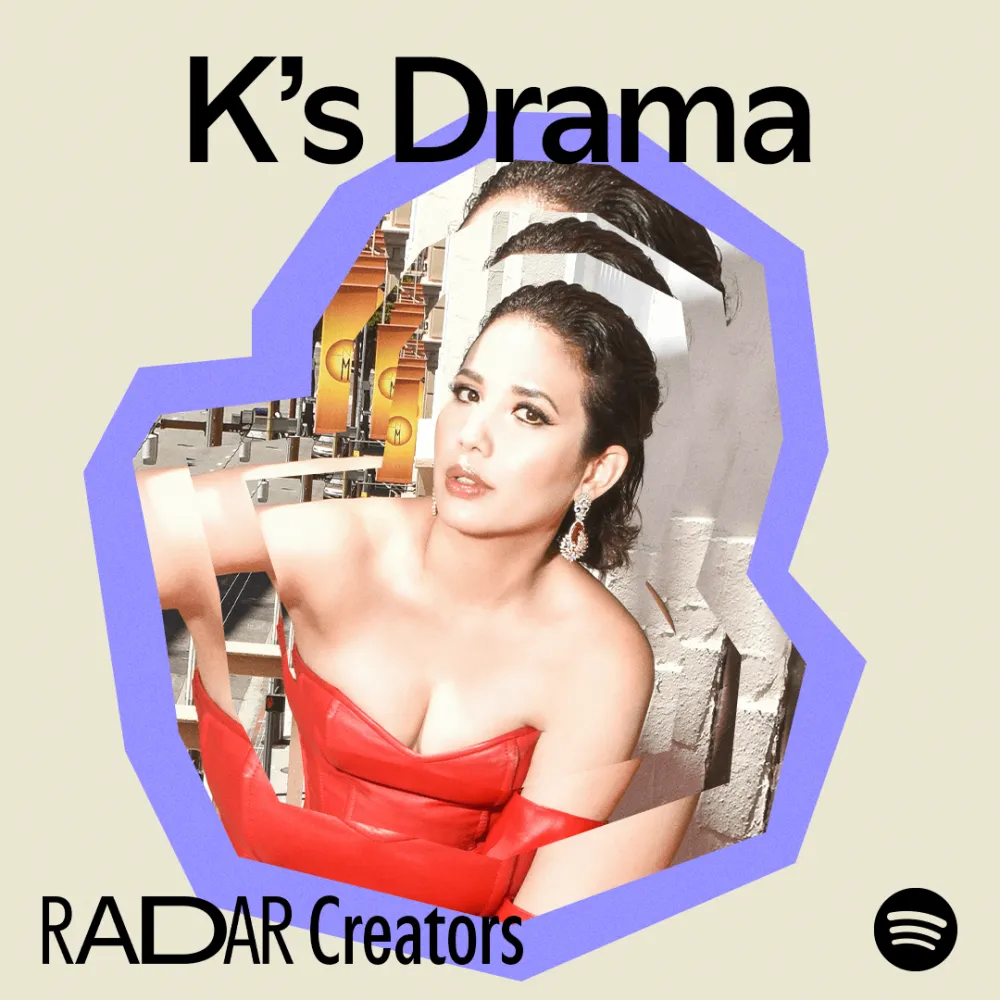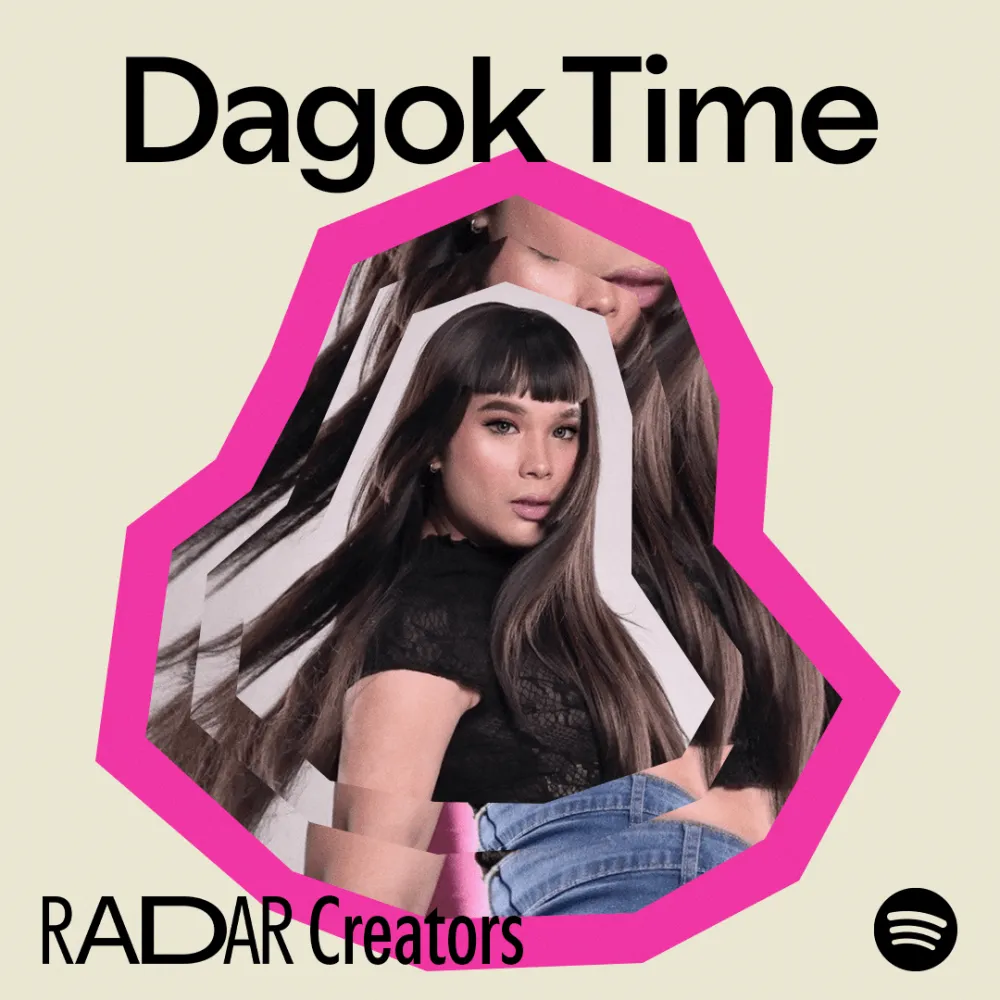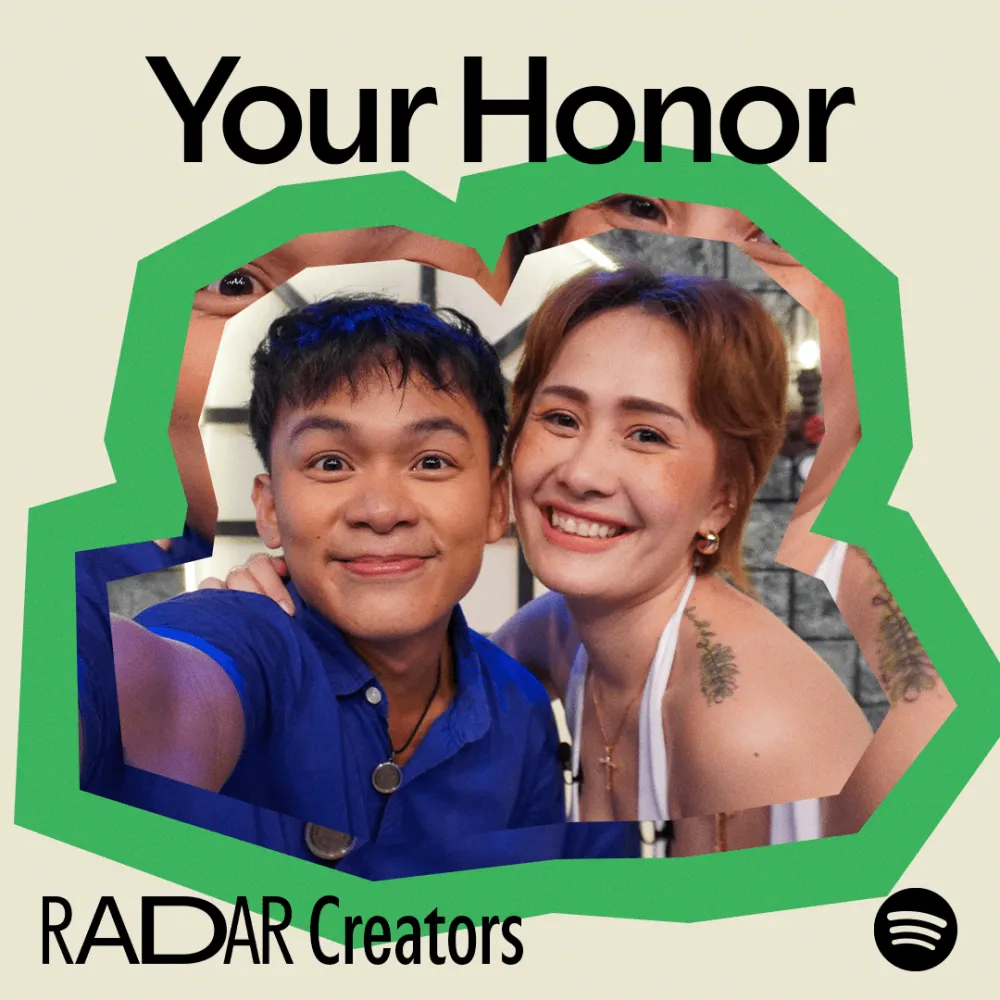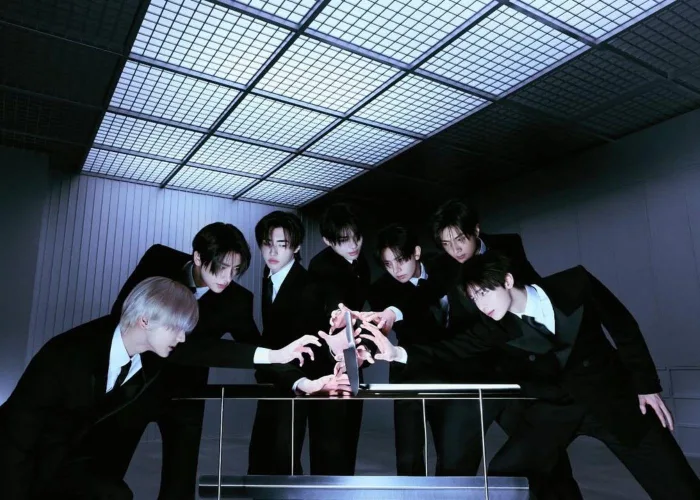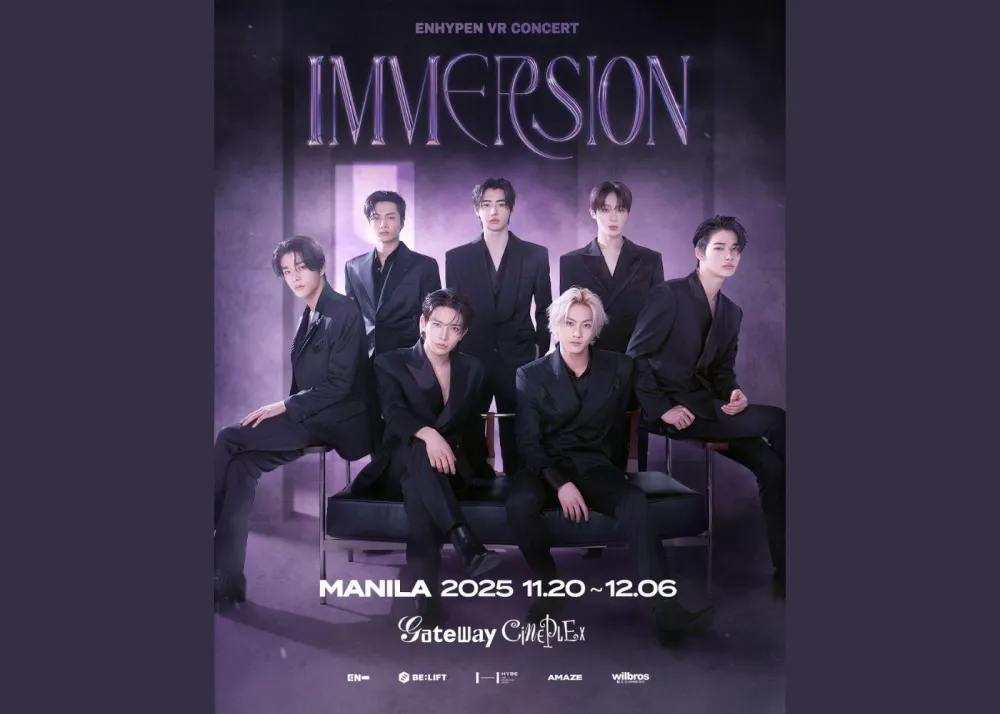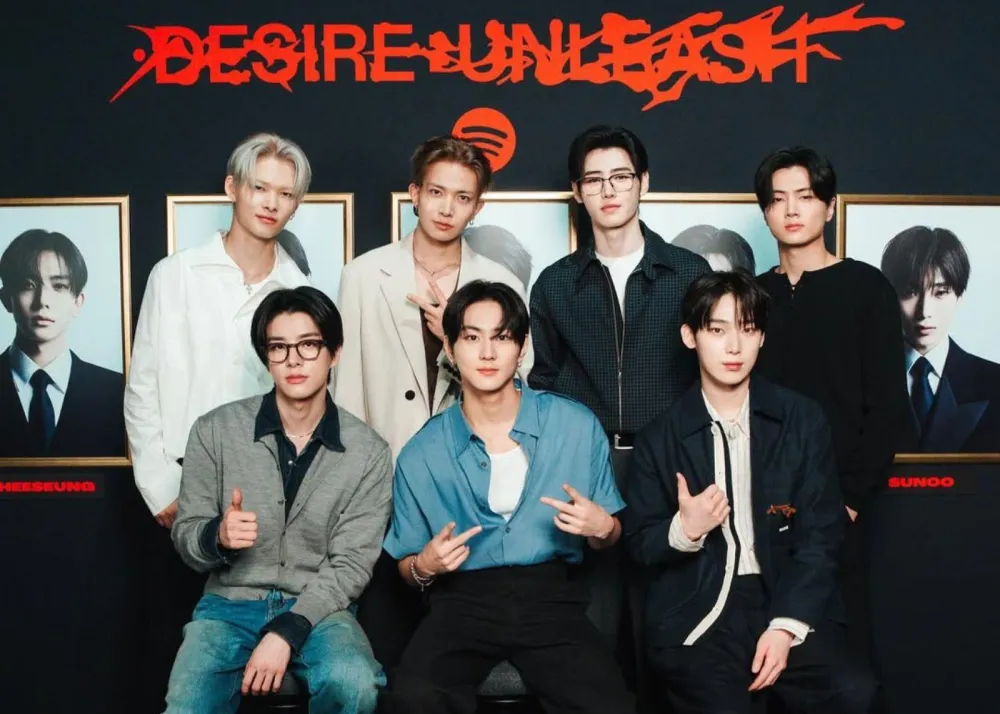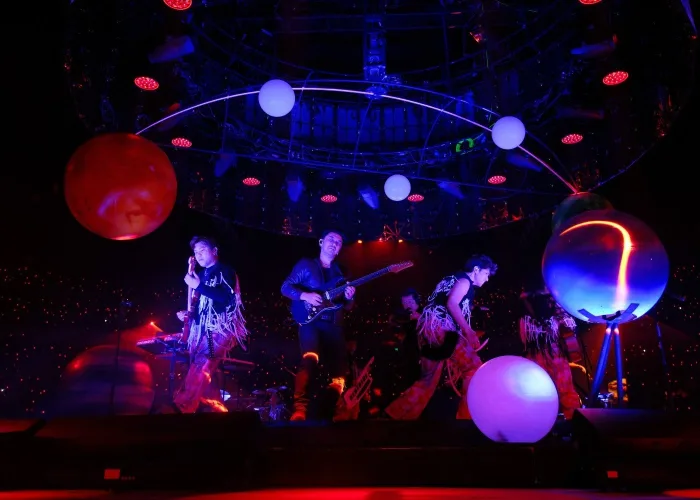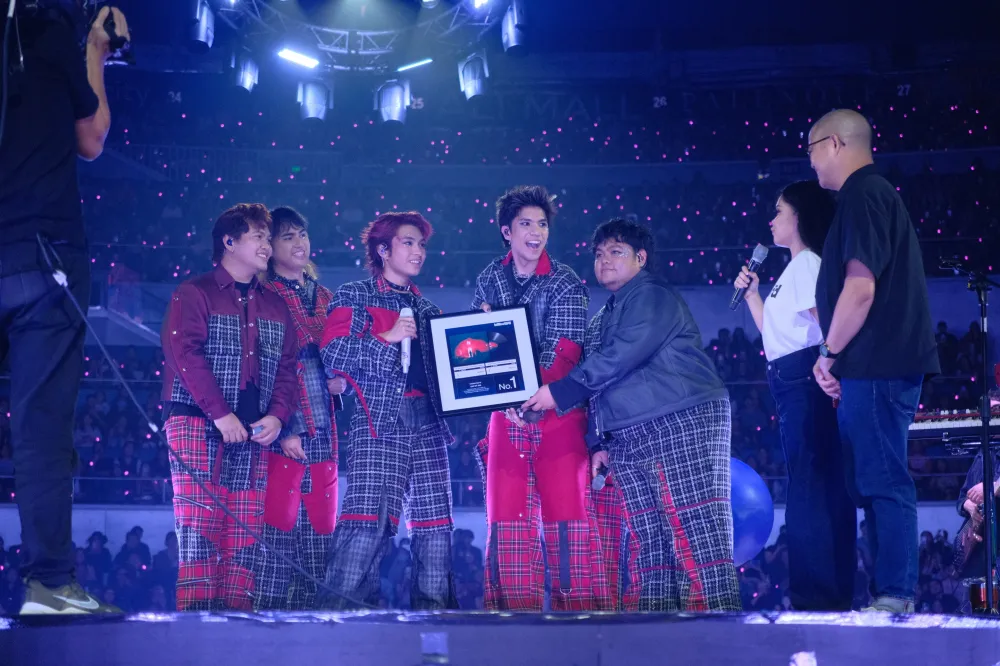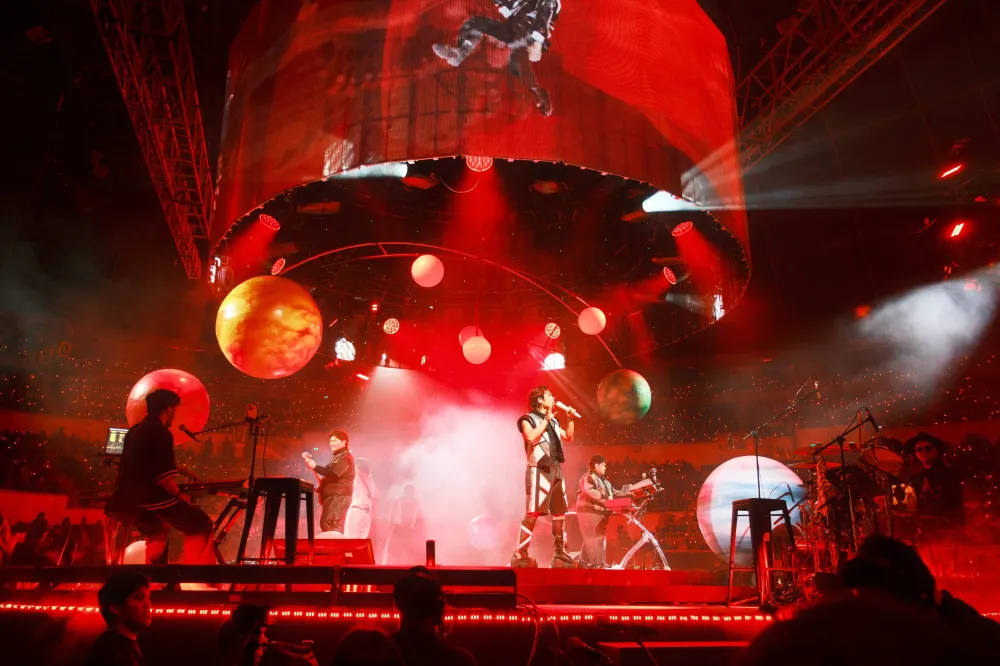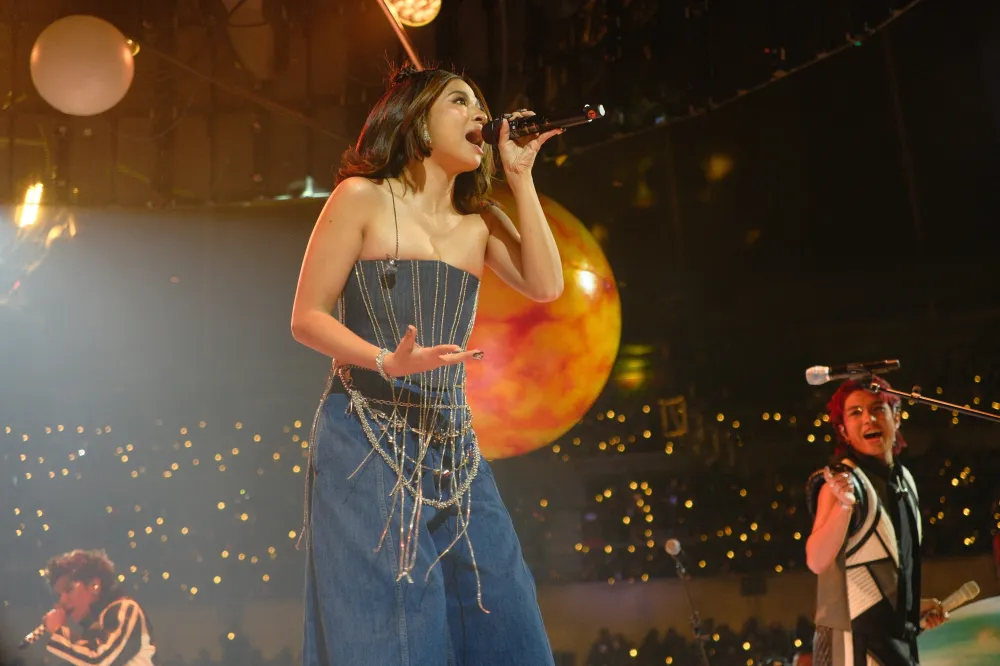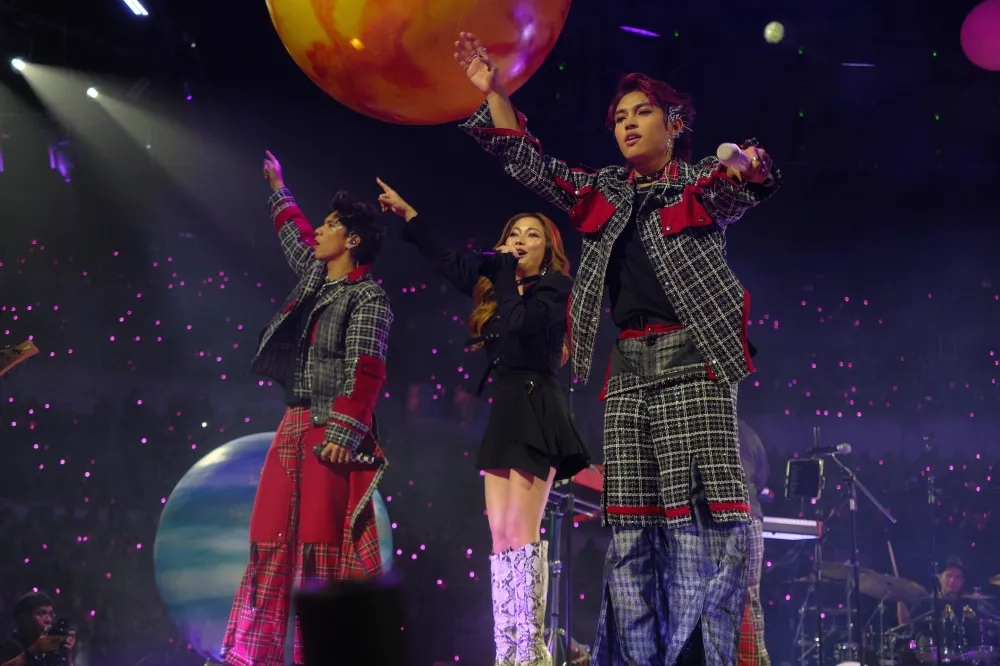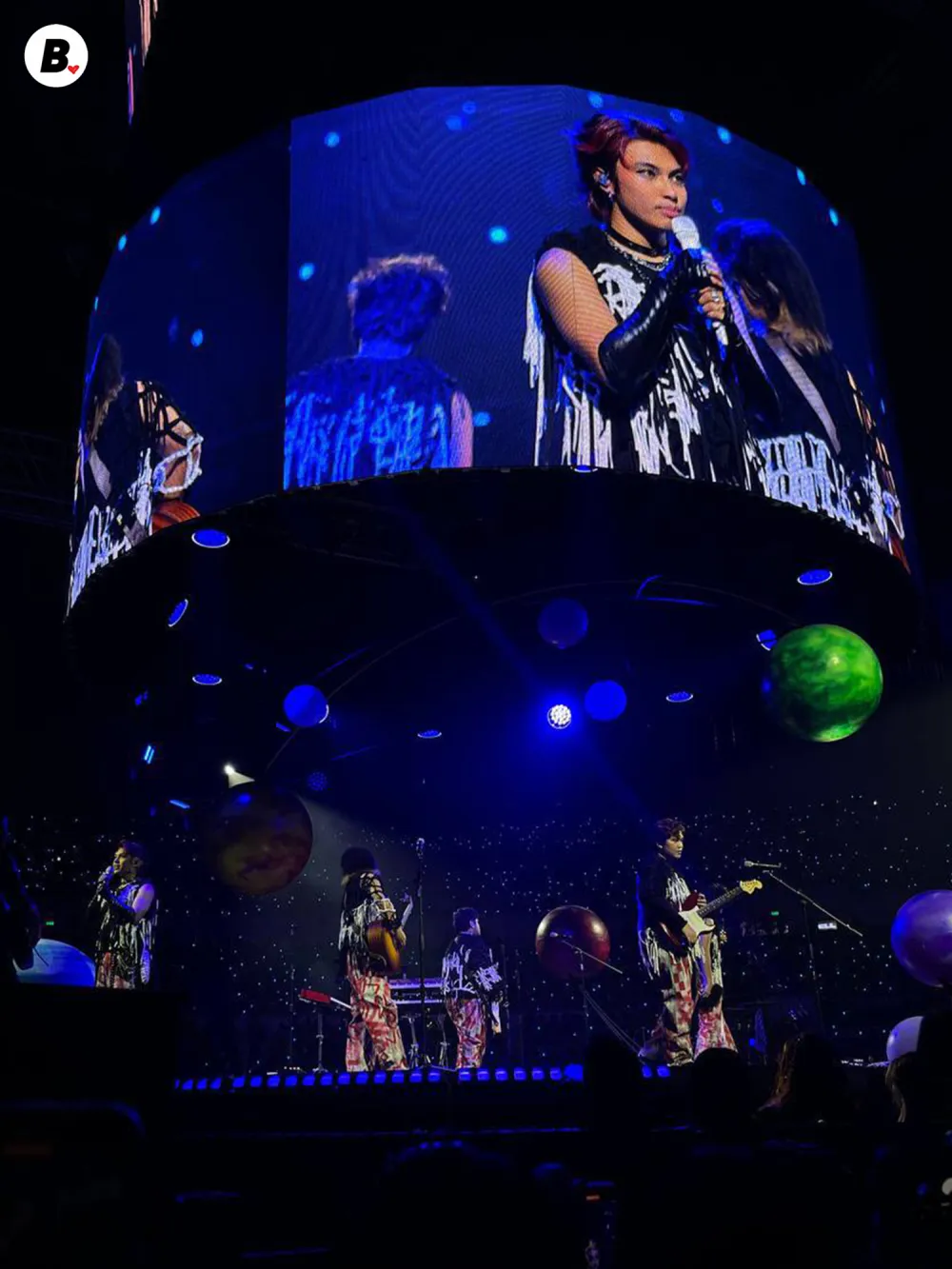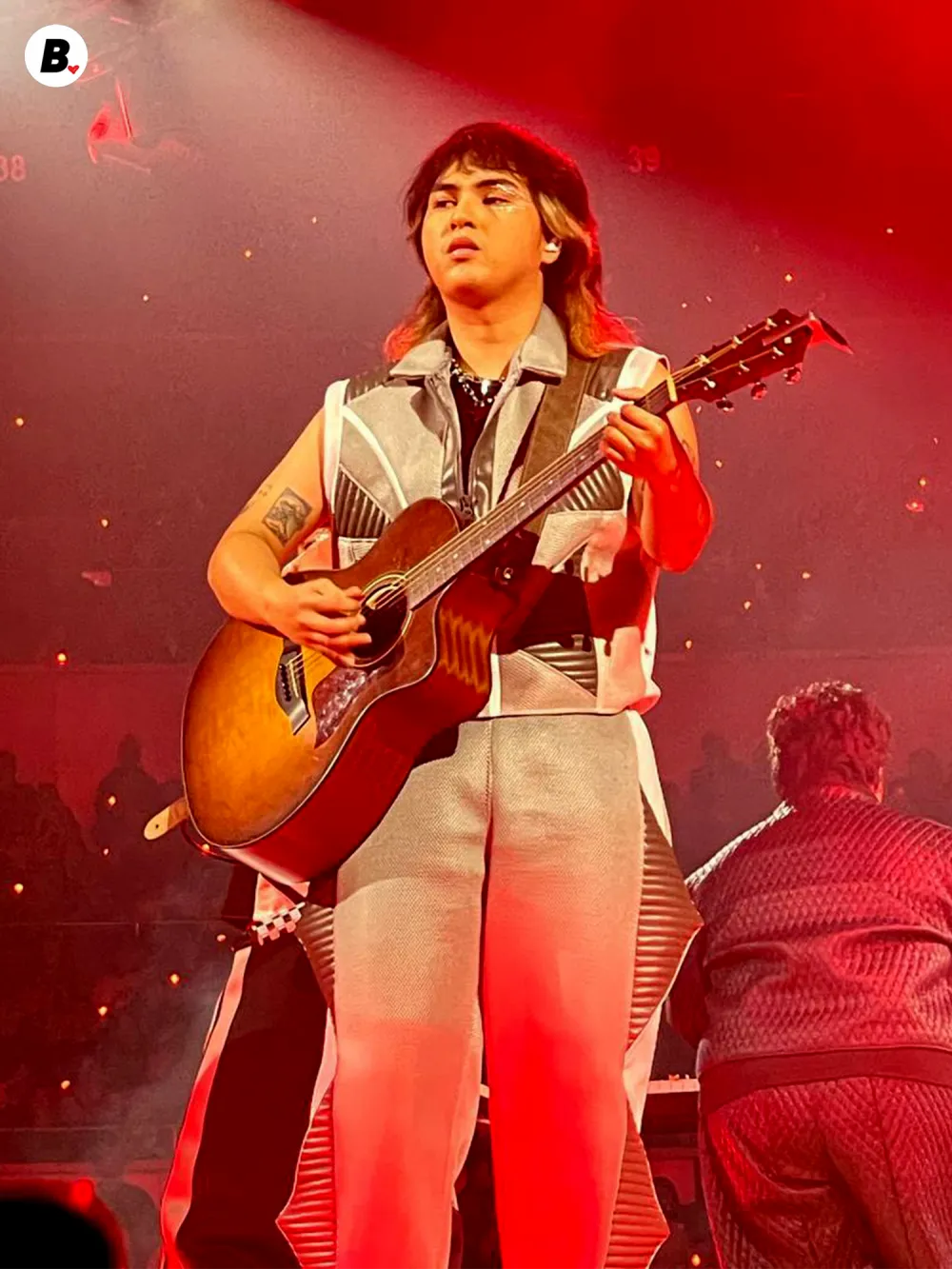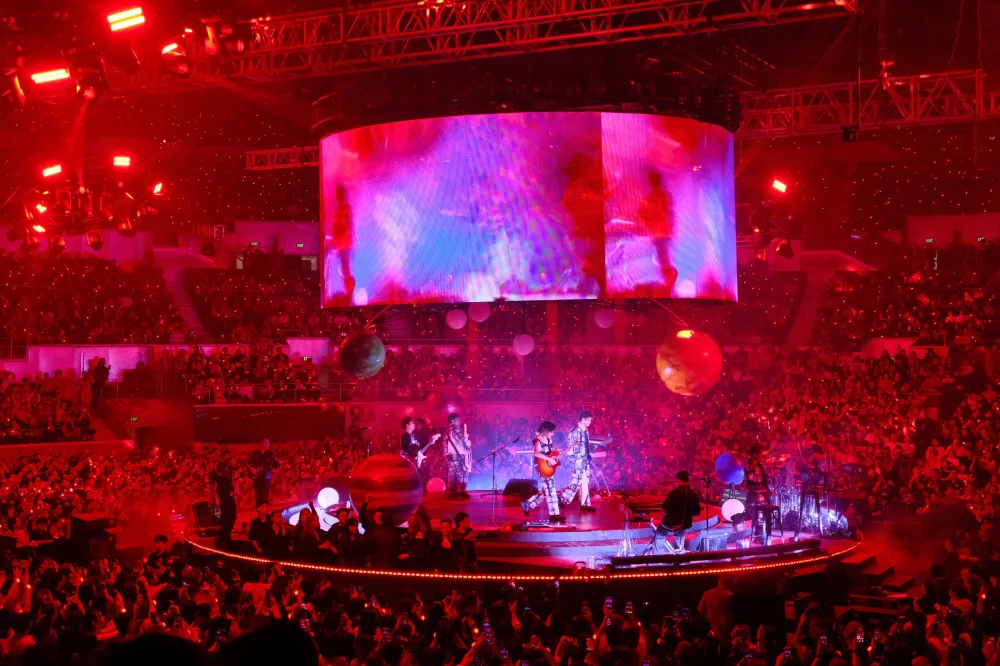Artist Spotlight: Michelle Alde on Championing Bold Femininity
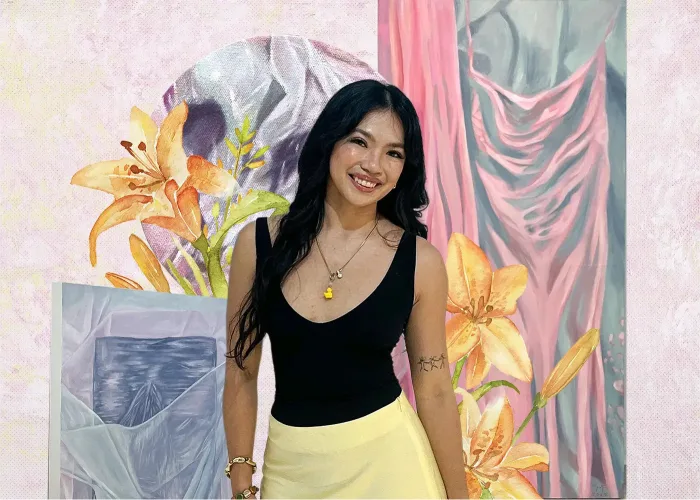
At first glance, Michelle Alde’s works captivate with their elegance. From the quiet grace of her figures, the fluidity of her brushstrokes, down to the refined play of texture and space. However, if you linger a little longer, her art reveals something deeper: a fearless exploration of femininity in all its strength, softness, and complexity.
A painter and multidisciplinary artist based in Alabang, Michelle’s practice spans both traditional and digital media, with oil as her signature medium. Through her craft, she captures the sentimentality and movement of the human experience, particularly those associated with femininity. Her pieces have been exhibited in several group shows across the country, including In An Ordinary Minute at Altro Mondo Creative Space in Makati. More recently, she has also commissioned an art piece for skincare brand Lactacyd, for the Museum of Speaking Skin, where she brought to life her own personal skin story through her signature strokes and hues on the canvas. Beyond painting, she also lends her creative eye to design as a mentor to burgeoning painters at the Young Artists Studio.
In our latest Artist Spotlight, The Beat Asia sat down with Michelle as she opens up about her artistic beginnings, her evolving interpretation of femininity, and how she balances the dualities of womanhood — their strength and vulnerability, as well as their delicacy and defiance with bold and elegant intent. She also reflects on her creative process, her feminist influences, and the empowering messages she hopes young women will take from her art.
Hi Michellle! Can you tell us about how you first discovered your love for art?
Absolutely! I have been active in the art scene for over two years now, participating in group exhibitions at galleries in the Philippines.
But my artistic journey really began much earlier. I grew up in a highly creative environment where I observed some relatives practicing their own art forms, which inspired me to pursue mine. During my early teens, I was fond of drawing portraits and clothing, because, back then, I wanted to be a fashion designer. Then, as I grew older, I began exploring painting, and there’s just something about the process of mixing paint, seeing the colors, and putting it onto the canvas that drew me into doing more of it. The next thing I know, I’ve fallen in love with it already.
Did you undergo any formal training? How has that shaped your current style and practice?
I was fortunate enough to have been exposed to many art forms early on. I joined various workshops as a child and explored both visual and performing arts.
With the support of the people around me, I was able to pursue my passion for art all the way to university. I studied at UP Diliman College of Fine Arts and majored in Painting, where my art skills have developed a lot in terms of technique, form, and conceptualization. Having been mentored by brilliant and talented artist-professors and exposed to various artists and artworks, I was able to develop my own visual language.
Over time, I became fascinated with the visual qualities of fabric, initially by how something so inanimate can be dynamic and full of movement at the same time. I’m also drawn to its shifts in movement when it interacts with other objects and figures, and so, it became a recurring metaphor and symbol in my art practice.
Yes, we’ve noticed the recurring themes and symbols in your pieces. What draws you to the theme of femininity?
My art, at its core, stems from personal thoughts, memories, and experiences, as well as the drive to preserve them, which are acts often associated with femininity. I’m drawn to this theme because of how sentimentality and femininity are often perceived as fragile and vulnerable. But for me, I think these are the qualities that carry so much strength. I want to honor these feminine qualities through my art, showing that there is a lot of strength in embracing them.
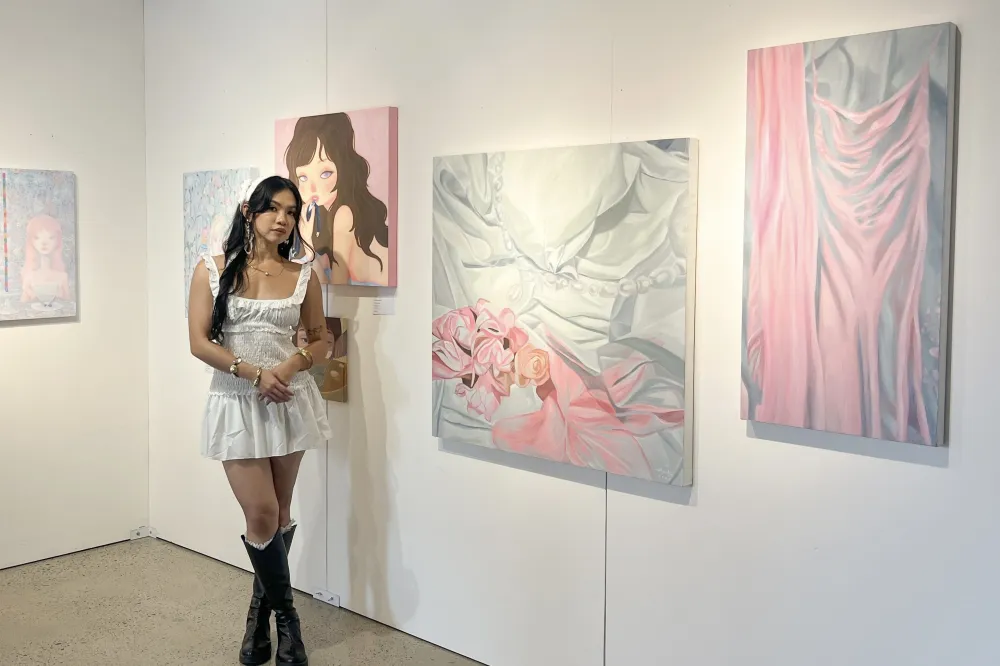
Could you describe how you interpret them through your art?
There’s a lot of fabric and drapery, alongside objects, figures, and colors that are often viewed as feminine symbols, involved in my work.
I use the fabric’s movement, texture, and folds as a visual metaphor for memory. I believe it carries memories and sentiments just as we do, where each movement creates a wrinkle or crease, just like each interaction reshapes us in some way. Like femininity, it’s seen as delicate, but also resilient. For me, the fabric embodies comfort, concealment, isolation, and visibility, depending on how I want it portrayed in the piece. As women, I think we can relate our experiences to these states. Our need for comfort and protection, the feeling of isolation, and most times, wanting to be seen and heard.
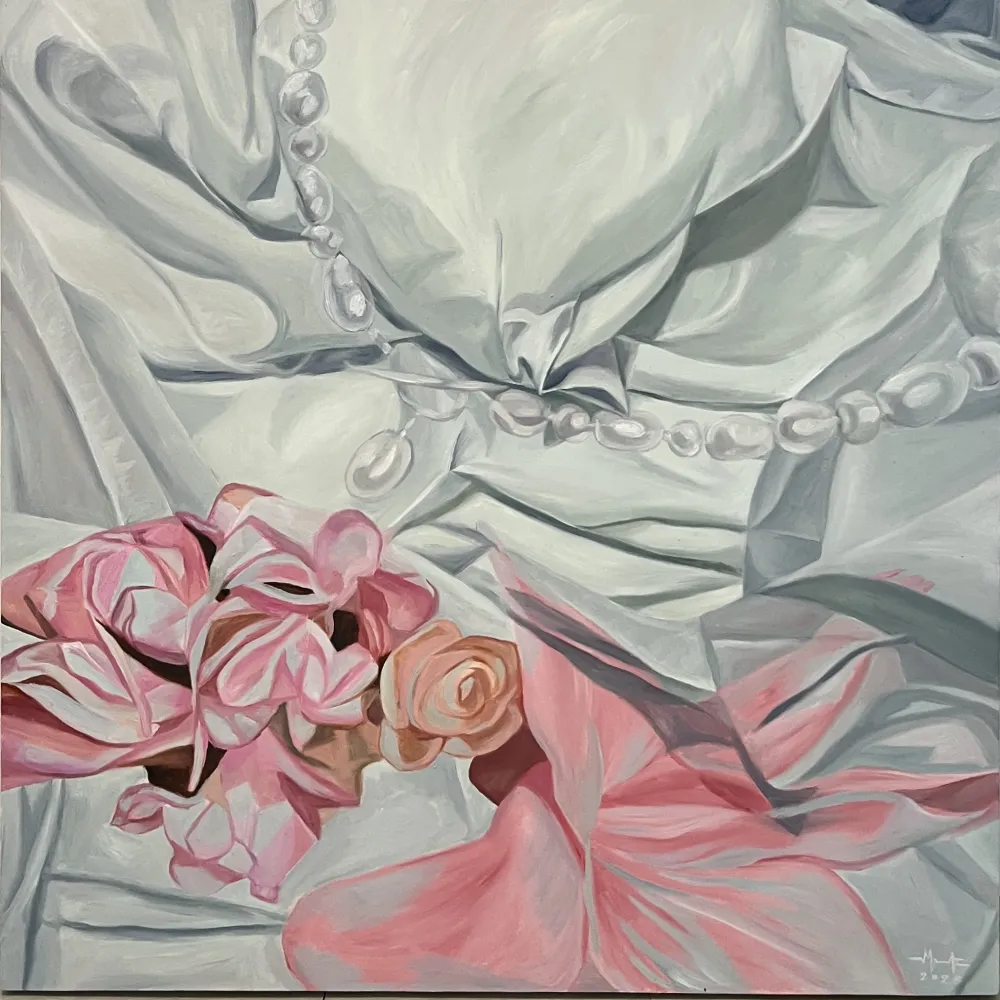
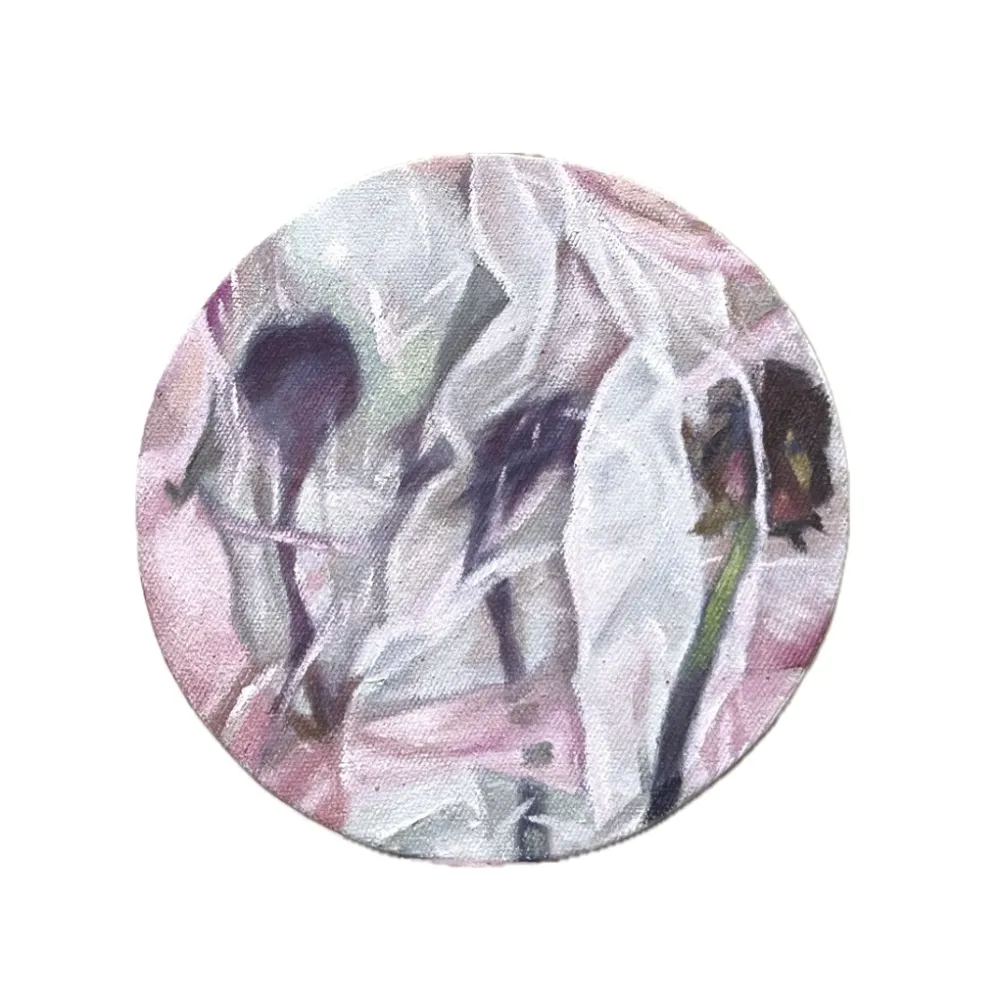
Can you name some of your biggest influences that have inspired your style and subject matter?
I like looking at different works of various artists, especially women artists who explore emotion and identity in their work. I also find inspiration from personal experiences and concepts that are not specific to visual art. I’m drawn to the fabric and figures’ movement, and I also think my quiet love for the performing arts shaped my fascination with “movement.”
Can you walk us through your creative process, from idea to finished piece?
I document a lot of moments in my life. I like to keep remnants of things and experiences. At the same time, I also enjoy capturing movements that interest me, like the fabric. It’s fascinating how each fold or crease shifts with light movement and touch. I then layer it with pieces of moments that have touched me, adding a blanket of interest to the work. Sometimes, I also play around with the fabric and figures in my work, concealing, wrapping, or unveiling the figures in my pieces, depending on how much I want them visible.
The painting process is a meditative act for me. Painting becomes my own act of preservation, using experiences and my inclination to document and keep memories. It brings me comfort that I can hold on to a moment and keep it with me as I continue to grow.
Is there a part in the process that you find particularly easy or challenging?
The easiest part of the process is when I’m fully immersed in my work, and I'm not worrying about what comes next. I just trust the process. I love it when I can just get lost in the middle of painting.
It can become quite challenging to start a piece at times because of self-doubt, like deciding when a painting is truly finished. At the same time, my inner critique gets the best of me sometimes, which I think happens to many artists as well. When that happens, it feels so scary and vulnerable to put my work out there. But sharing it anyway, I think, is a brave act.
How do you see art as a platform for feminist expression?
I think art has always been a way for us women to share our stories. Throughout history, women have been fighting to become visible and heard. It opens up spaces for more conversations about truths and lived experiences among women, helping us connect.
Having spaces that welcome diverse women’s perspectives is also really important. I feel lucky to be in a time where there are more and more spaces, platforms, and opportunities that celebrate feminist expression. I believe we still have a long way to go, but we’ve also come so far already.
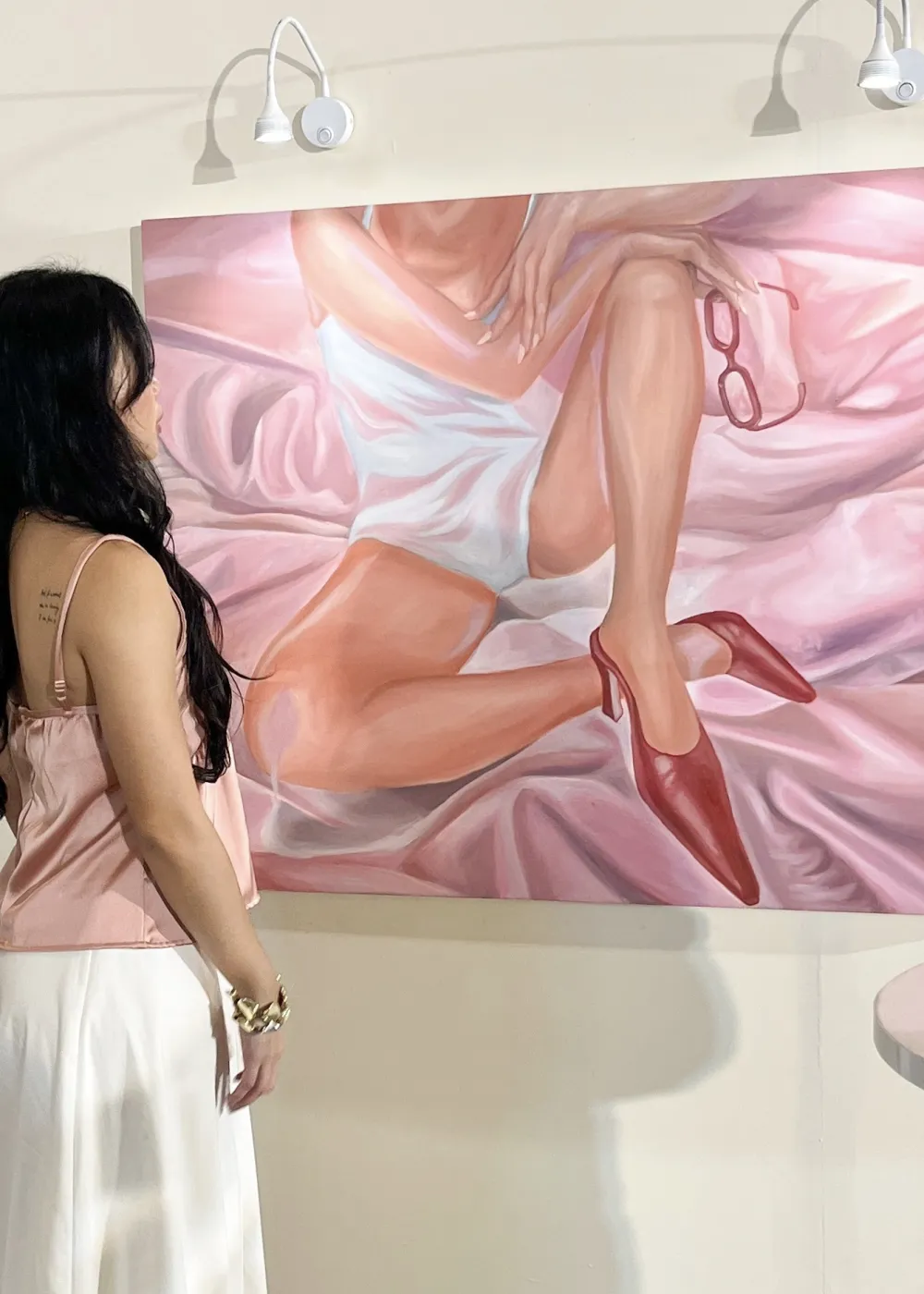
How do you balance showcasing both the strength and vulnerability of womanhood in your pieces?
Reflecting on my lived experiences as a woman, I’ve been exploring how to translate them visually through my chosen subject. I’ve been working with the duality of the fabric: how it can feel soft and comforting yet heavy and full of tension at the same time. I try to express this through gentle colors and form, contrasted with movement and texture that carry a sense of resistance.
Women are often seen as nurturing and soft, but in reality, we carry so much pressure from the expectations placed on us.
Has your own understanding of feminism evolved through your art practice?
Definitely. Through art, I broadened my perspective on the different approaches women take in their art practice, which I have also taken into my own. I have embraced themes, concepts, materials, and subjects that are often seen as “too soft and feminine” and learned to see them as powerful.
At the same time, I acknowledged that femininity is broader than just softness and strength. Feminism is not only about honoring softness, but also about recognizing the struggles and resistance women have faced throughout history and still face today. It’s expressed through different materials and subjects, which keep shaping my perspective as an artist.
Are there particular pieces of yours that feel especially personal or transformative to you?
Some of my artworks showcase the interaction between the fabric and the body figure. In one of them, I explored printmaking again after several years, which became a freeing experience. For one, since it was different from my usual painting medium, I think it released me from the pressures I usually encounter when I’m painting. I had lower expectations, so I was able to explore them freely.
Secondly, the process of making multiple images of the figure on a sheer fabric and then layering them on top of one another became a vital part of its meaning-making that was really personal to me. The pieces in particular are “Grounded” (2025) and “Water Bearer” (2025).
Another one that felt transformative was when I finally decided to unveil the veiled figure that had been present in my work in the past couple of years. I think it’s time for her to interact and move with the fabric more visibly.
You also teach at Young Artists Studio. What message do you hope women — especially younger women — take away when they encounter your art?
I hope they find comfort and feel that it’s alright to embrace their softness and sentimentality. There’s a lot of strength in doing so. I also hope they feel inspired and courageous enough to create something, even if it feels vulnerable and scary.
What do you hope to explore in future works? Are there any themes or directions you’d like to push further?
I want to dive deeper into the idea of softness and create works centered on the concept of “love.” Not just romantic love, but all kinds: platonic love, self-love, quiet love, etc. I would like to paint about love and because of love.
You can view some of Michelle’s art by following her on Instagram.
Get the latest curated content with The Beat Asia's newsletters. Sign up now for a weekly dose of the best stories, events, and deals delivered straight to your inbox. Don't miss out! Click here to subscribe.



